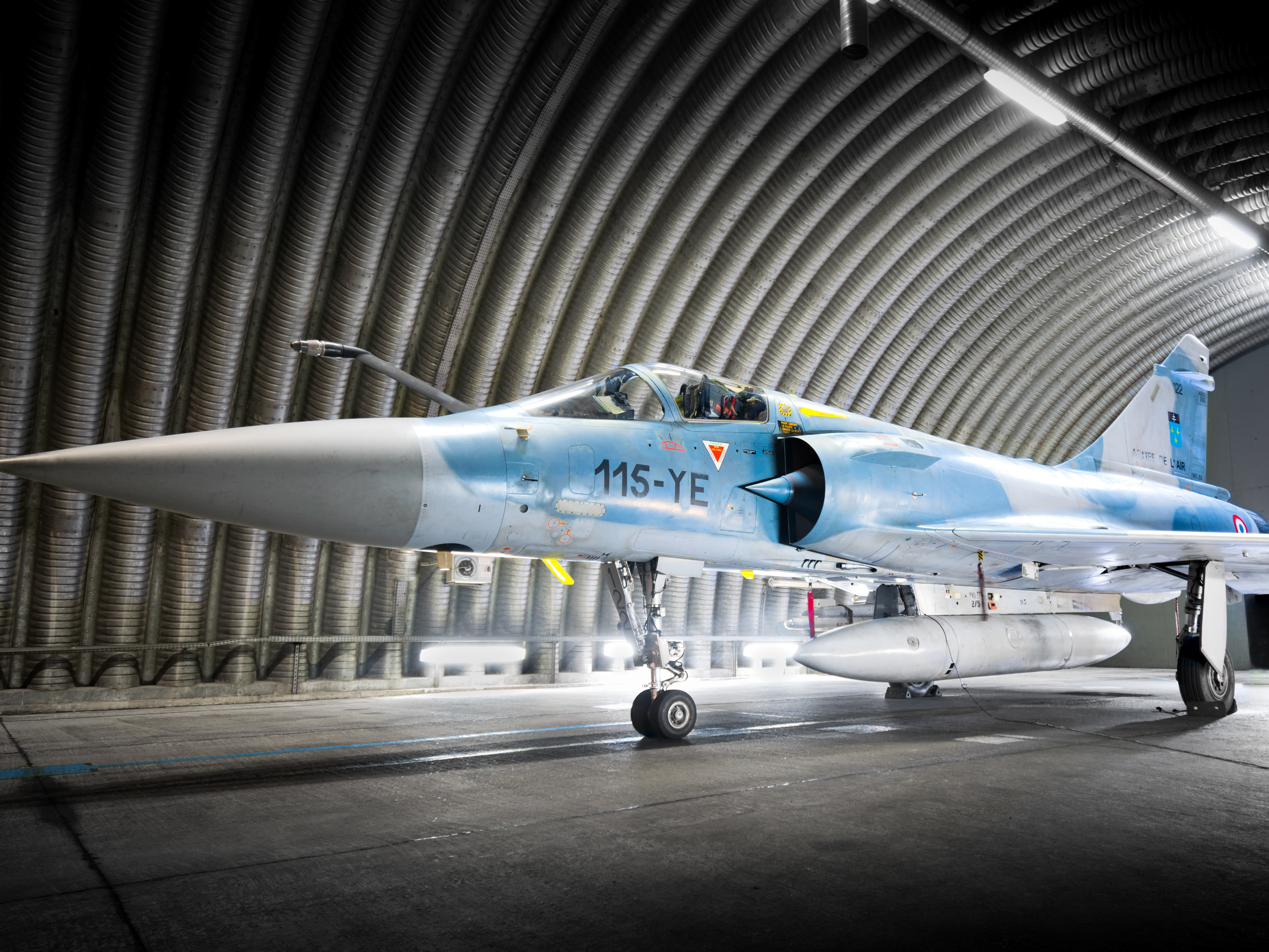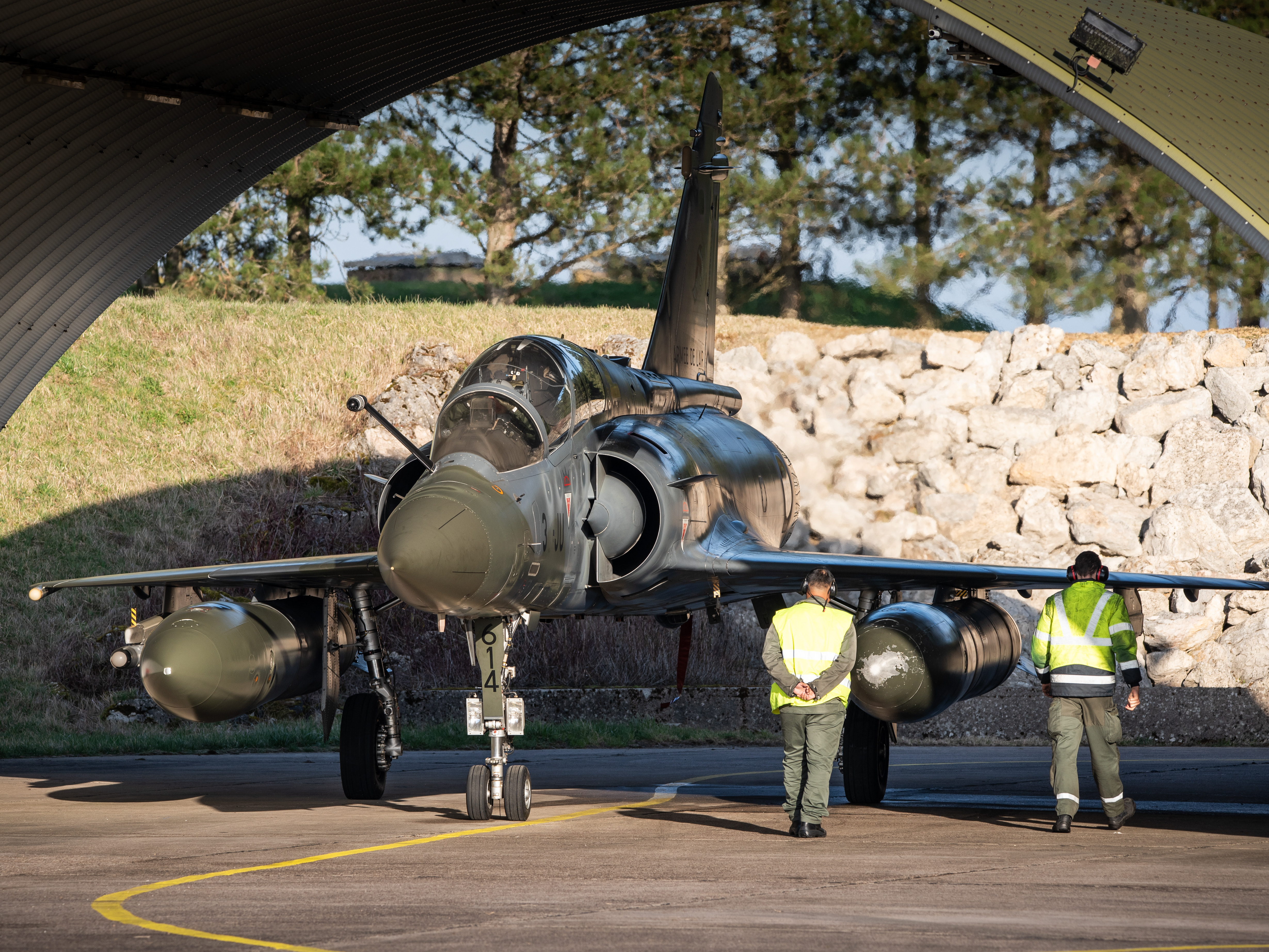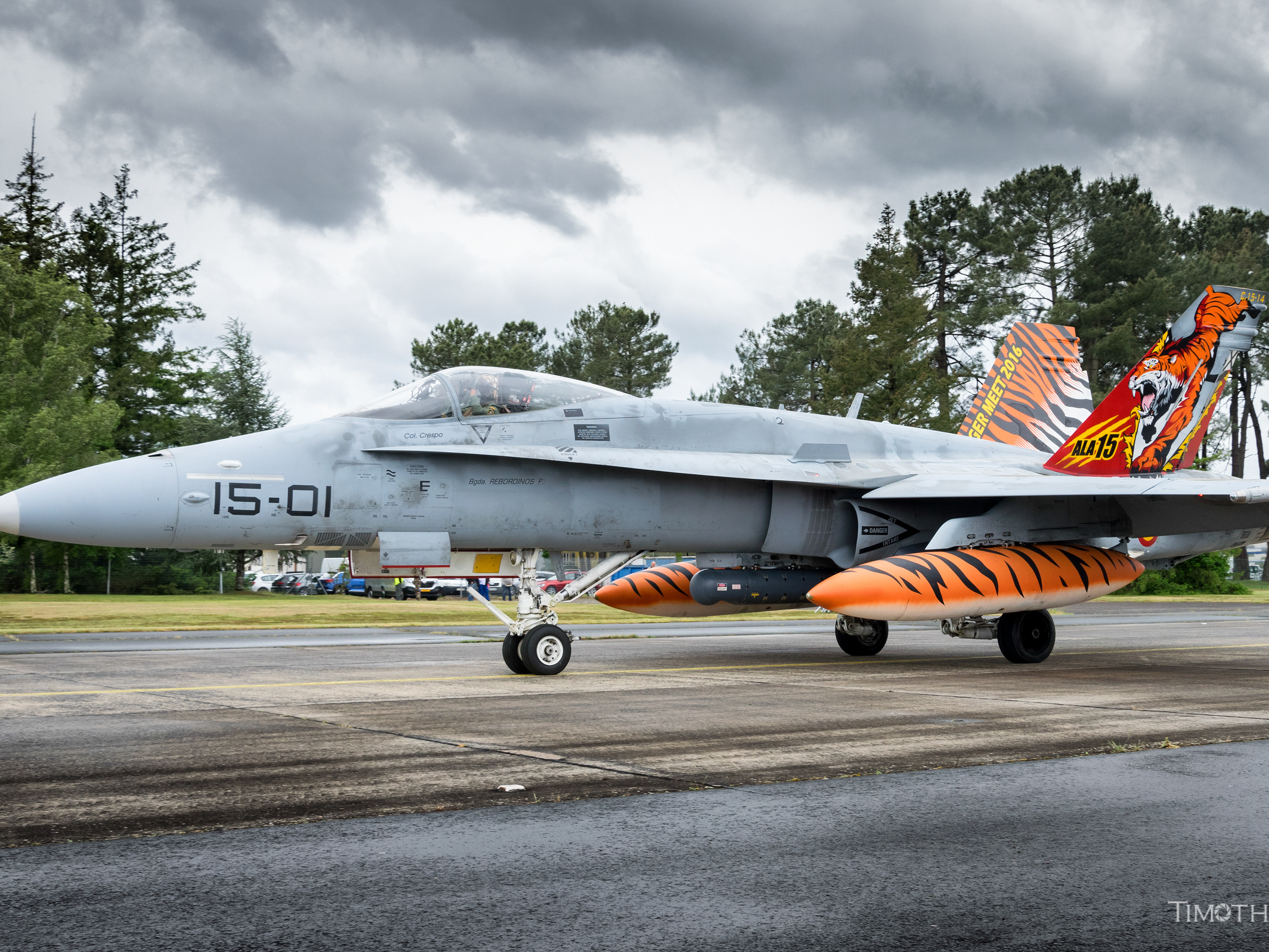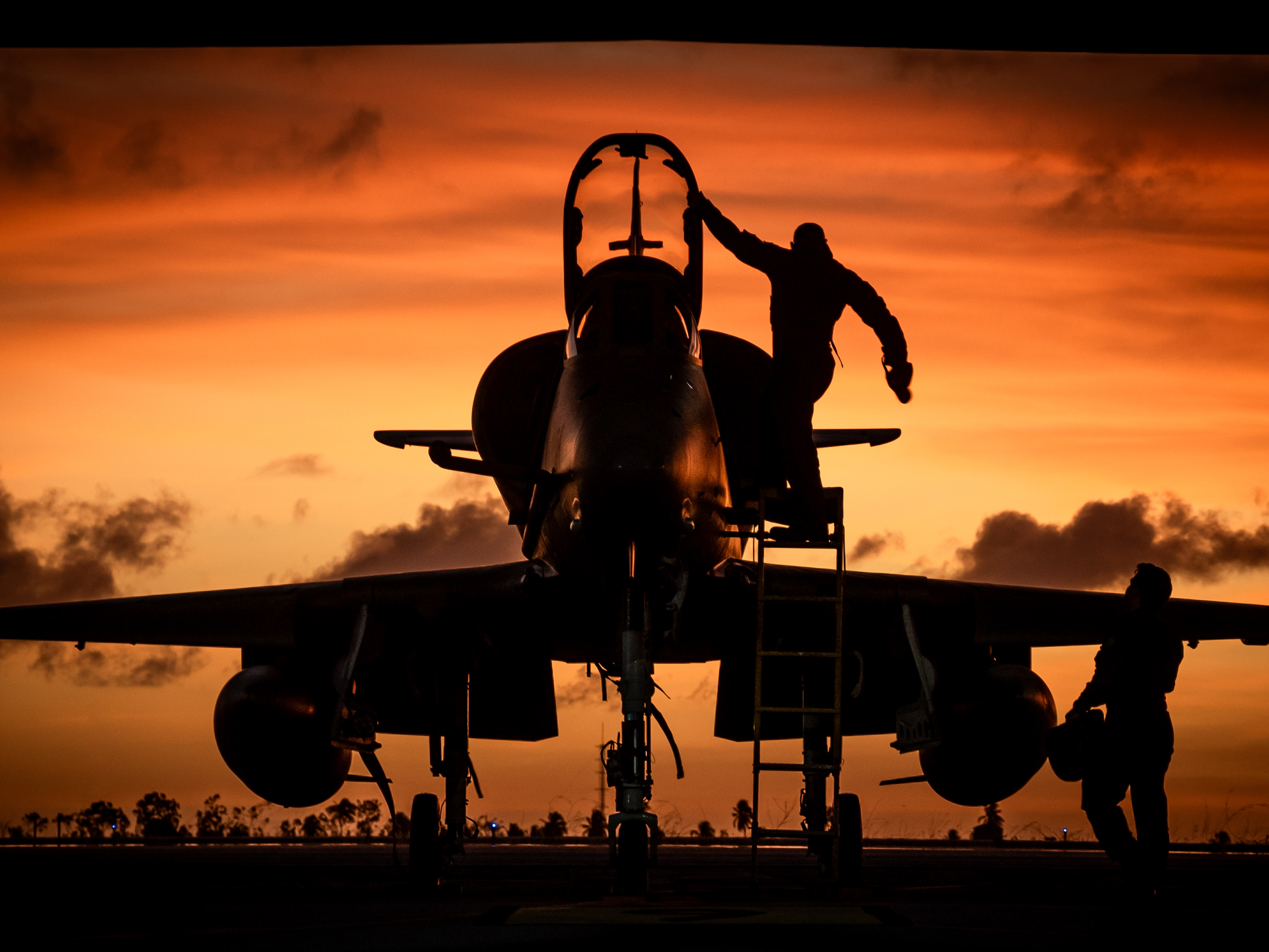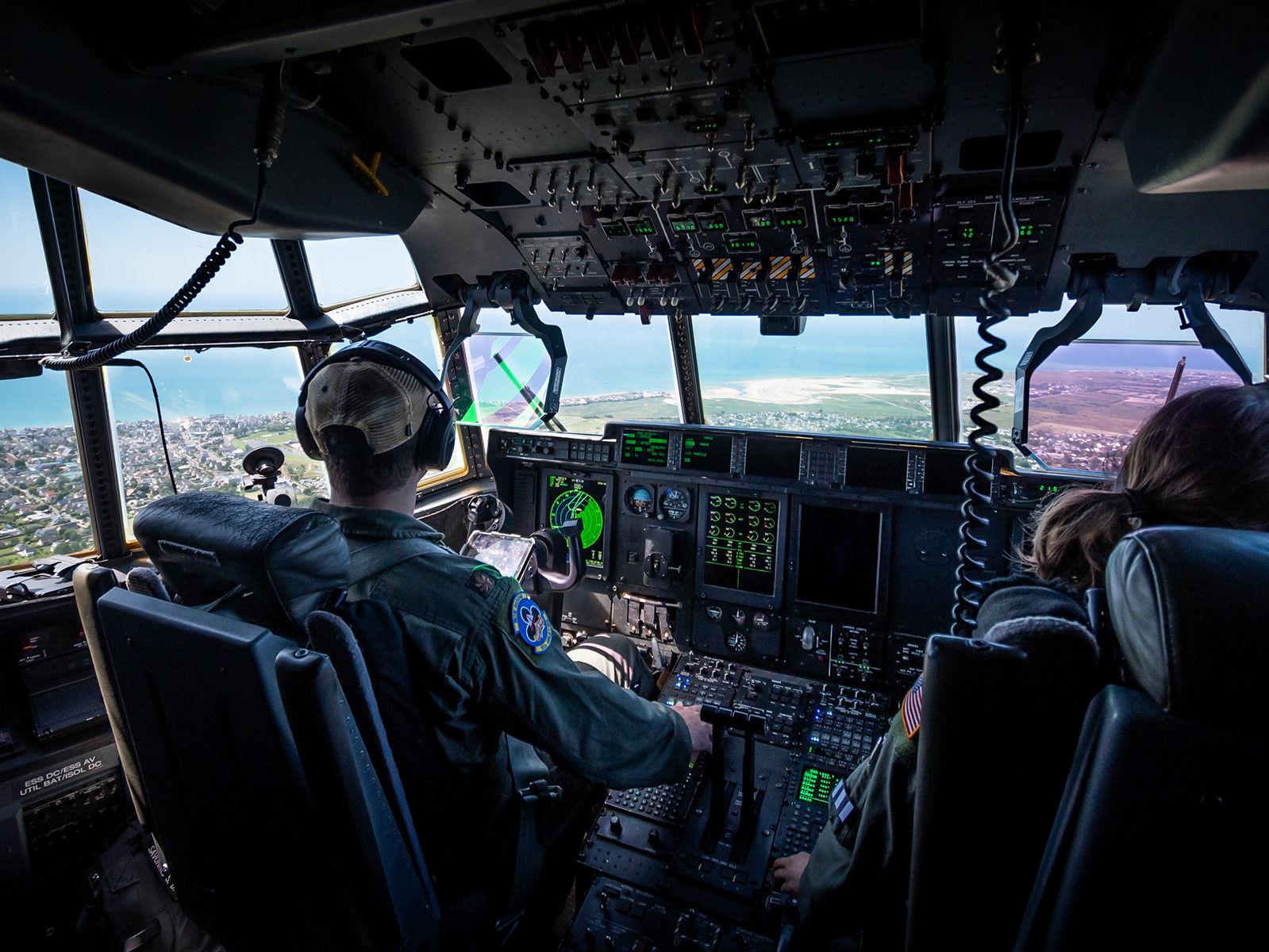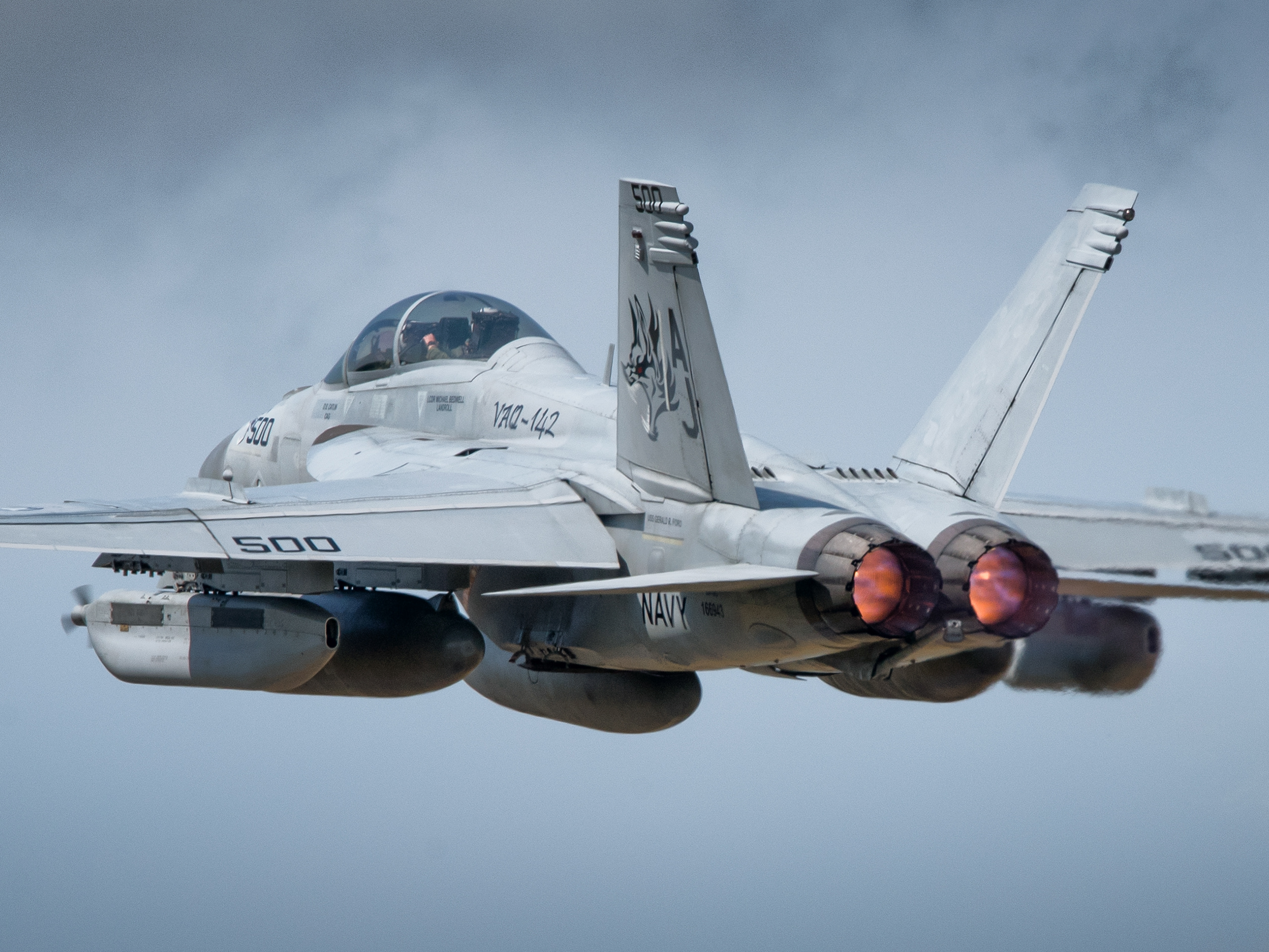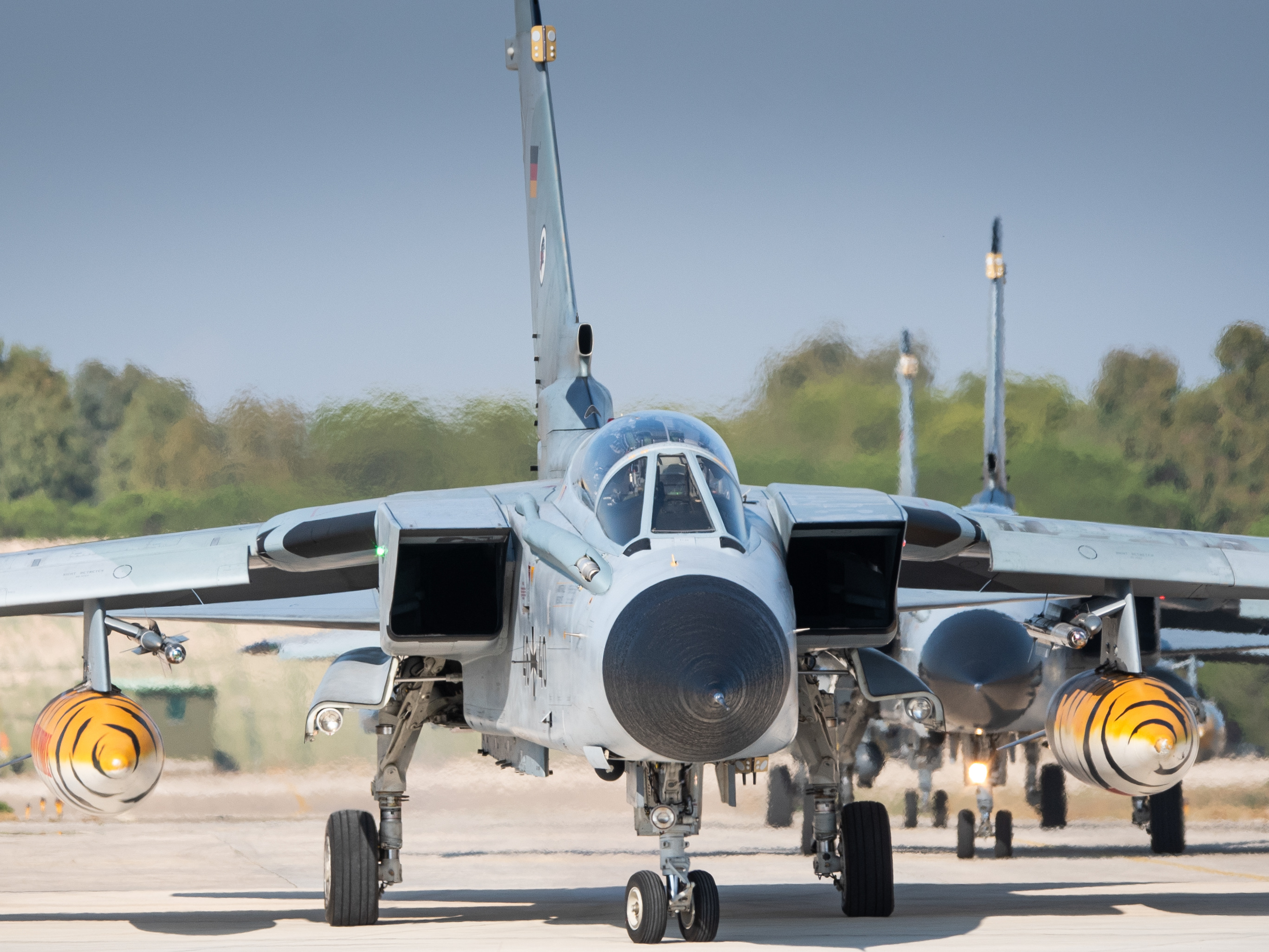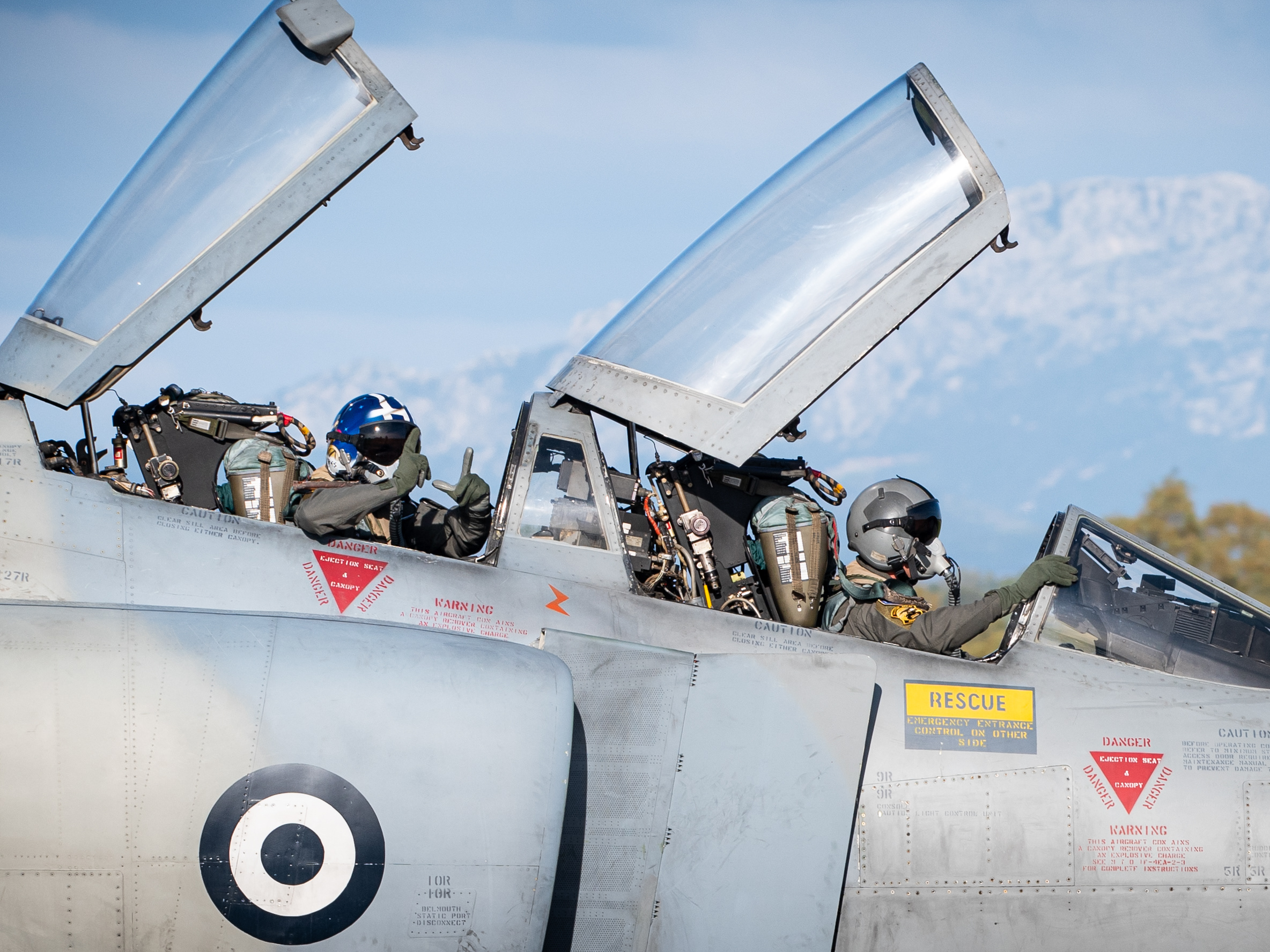After more than 60 years in service with the Armée de l’Air et de l’Espace, the KC-135 will be officially retired on June 30th, 2025. As the only remaining active squadron operating the tanker, ERV 4/31 "Sologne" continues to fly regular missions with its three KC-135RGs. Throwback to six decades operating the Boeing tanker for strategic transport and support of French military jets.
Background of the KC-135
In the 1950s, the U.S. Air Force operated the world's first production aerial tanker, the Boeing KC-97 Stratofreighter, a military version of the Boeing Stratocruiser equipped with a flying boom and additional kerosene (jet fuel) tanks. Since the KC-97 itself used gasoline, a new tanker was needed that could use the same fuel as the aircraft it refueled while also flying faster than piston-powered aircraft.
The KC-135 Stratotanker was derived from the Boeing 367-80, a jet transport demonstrator that also served as the basis for the Boeing 707 commercial airliner. In 1954, the USAF placed an initial order for 29 KC-135A aircraft, followed by additional orders, bringing the total to 792 aircraft across all C-135 variants. The first KC-135 flew in August 1956, and the first operational Stratotanker was delivered to Castle Air Force Base, California, in June 1957. The final KC-135 was delivered in 1965.
The KC-135 was the first variant of the C-135 family, which later diversified into numerous roles. The C-135 was initially intended as a temporary solution until the arrival of dedicated jet transports like the Lockheed C-141 Starlifter. By 1970, most C-135 airframes had been modified and reassigned to other missions, including VIP transport, systems testing, and strategic reconnaissance.
The KC-135 remains widely used by the U.S. Air Force, with around 400 airframes still in service across various squadrons. Exports have been limited, with Türkiye operating seven KC-135R, France previously operating 12 modified C-135FR and three KC-135RG, and Chile still flying three KC-135E up to this day (one of them could be seen during the 2024 edition of Cruzex in Brazil, see the report here). Singapore also operated four KC-135R from 1999 to 2019.
Uniquely, the KC-135 is the last tanker featuring a dedicated boom compartment, where the Air Refueling Operator (ARO), or "Officier de Ravitaillement en Vol" (ORV) in French, lies flat on their stomach at the rear of the aircraft, directly observing the receiving plane and controlling the ruddevators via a joystick. In contrast, modern tankers like the Boeing KC-46 and Airbus A330 MRTT use camera-based refueling systems, with the ARO operating from the cockpit.
The KC-135 Stratotanker was derived from the Boeing 367-80, a jet transport demonstrator that also served as the basis for the Boeing 707 commercial airliner. In 1954, the USAF placed an initial order for 29 KC-135A aircraft, followed by additional orders, bringing the total to 792 aircraft across all C-135 variants. The first KC-135 flew in August 1956, and the first operational Stratotanker was delivered to Castle Air Force Base, California, in June 1957. The final KC-135 was delivered in 1965.
The KC-135 was the first variant of the C-135 family, which later diversified into numerous roles. The C-135 was initially intended as a temporary solution until the arrival of dedicated jet transports like the Lockheed C-141 Starlifter. By 1970, most C-135 airframes had been modified and reassigned to other missions, including VIP transport, systems testing, and strategic reconnaissance.
The KC-135 remains widely used by the U.S. Air Force, with around 400 airframes still in service across various squadrons. Exports have been limited, with Türkiye operating seven KC-135R, France previously operating 12 modified C-135FR and three KC-135RG, and Chile still flying three KC-135E up to this day (one of them could be seen during the 2024 edition of Cruzex in Brazil, see the report here). Singapore also operated four KC-135R from 1999 to 2019.
Uniquely, the KC-135 is the last tanker featuring a dedicated boom compartment, where the Air Refueling Operator (ARO), or "Officier de Ravitaillement en Vol" (ORV) in French, lies flat on their stomach at the rear of the aircraft, directly observing the receiving plane and controlling the ruddevators via a joystick. In contrast, modern tankers like the Boeing KC-46 and Airbus A330 MRTT use camera-based refueling systems, with the ARO operating from the cockpit.
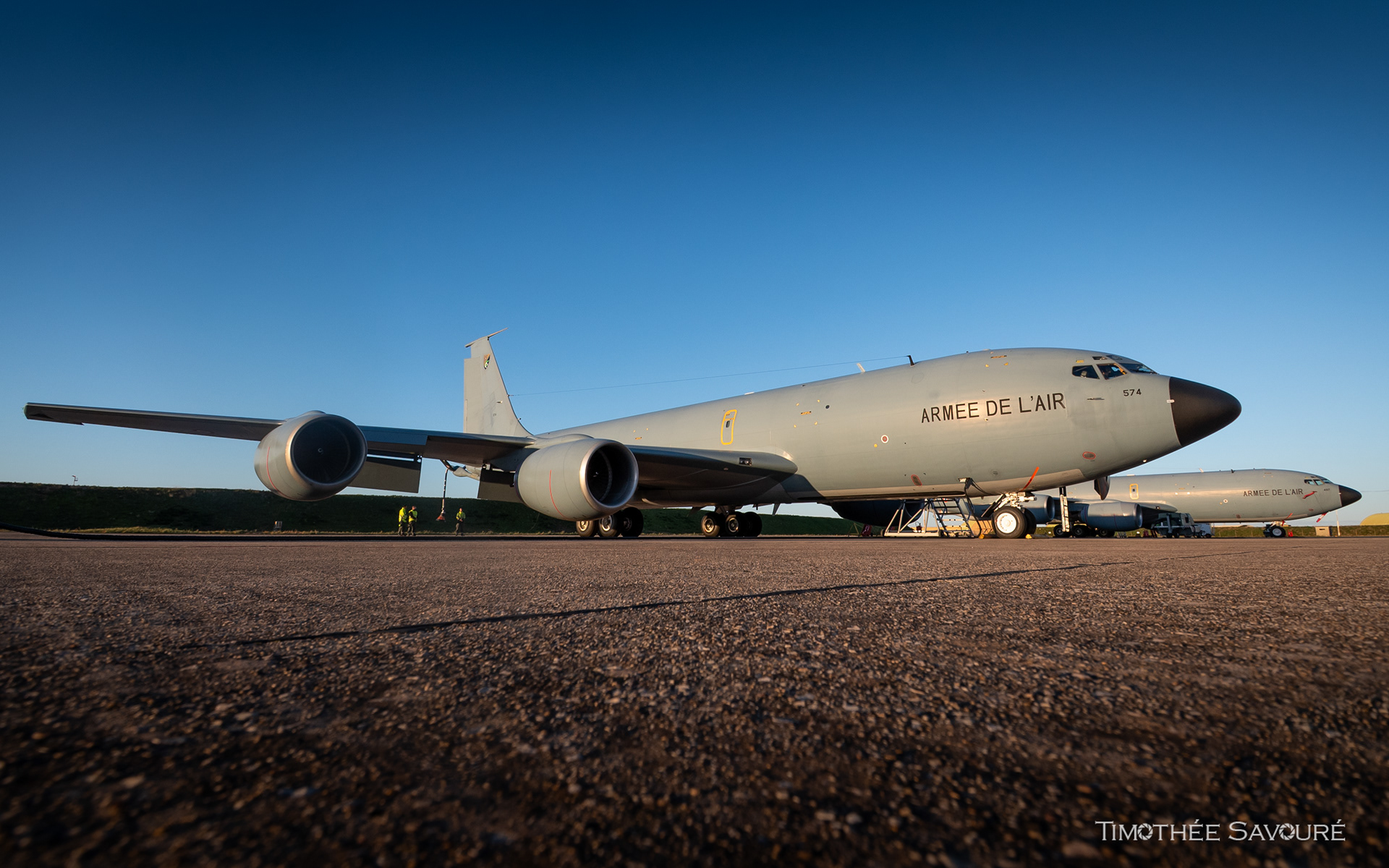
Armée de l'Air KC-135RG 574 & 497 on Istres Air Base apron

The Turkish Air Force is another export customer of the Boeing KC-135

The United States Air Force modified two C-135 to OC-135B variants for reconnaissance missions
The C-135 in the French Air Force
In the early 1960s, France sought to develop strategic aerial refueling and transport capabilities, particularly to support its expanding nuclear deterrence force. It became clear that existing aircraft could not support Mirage IV bombers on long-range missions as part of the Force de Frappe (France’s nuclear deterrence force). With no suitable European-made tanker available, France turned to the United States, acquiring modified KC-135s optimized for refueling French aircraft, designated C-135F. Between 1964 and 1965, France received 12 of the aircraft, nicknamed Stratolifters and powered by Pratt & Whitney J57 turbojet engines. These aircraft were assigned to the 90ᵉ Escadre de Ravitaillement en Vol (ERV, Air Refueling Wing) and stationed at Istres, Avord, and Mont-de-Marsan Air Bases in support of the Mirage IV fleet.
On June 30, 1972, the C-135F coded 473 was lost in the Hao Atoll, Tahiti (French Polynesia) due to an engine failure caused by excessive corrosion during the deployment. This incident reduced the French Air Force's tanker fleet to 11 aircraft. At the time, the aircraft was part of ERV 4/91 “Landes”, based at Mont-de-Marsan, and supported French nuclear tests in the Pacific by conducting weather surveys before atmospheric nuclear detonations and tracking radioactive clouds after explosions.
On June 30, 1972, the C-135F coded 473 was lost in the Hao Atoll, Tahiti (French Polynesia) due to an engine failure caused by excessive corrosion during the deployment. This incident reduced the French Air Force's tanker fleet to 11 aircraft. At the time, the aircraft was part of ERV 4/91 “Landes”, based at Mont-de-Marsan, and supported French nuclear tests in the Pacific by conducting weather surveys before atmospheric nuclear detonations and tracking radioactive clouds after explosions.
Between 1985 and 1988, France upgraded its C-135F fleet to the C-135FR standard, replacing the aging J57-P-59W engines with CFM-56 turbofans (similar to those on the U.S. KC-135R). This modernization improved fuel efficiency, reduced maintenance requirements, and increased operational range. The upgrades, carried out in the United States, also included extensive maintenance, wing reinforcements, the addition of an Auxiliary Power Unit (APU), and cockpit modernization. Further modifications were made in 1993, including the installation of a flexible refueling pod under each wing and the replacement of fuel pumps with more powerful models. This upgrade enabled each C-135FR to refuel either one aircraft via the boom or two aircraft simultaneously via the pods. Despite these improvements, the C-135FRs were aging, leading the French Air Force to purchase three additional KC-135 Stratotankers from the U.S. Air Force in 1994. These second-hand aircraft (coded 497, 525, and 574) were upgraded to KC-135R standards before their delivery to France in 1997 and 1998.
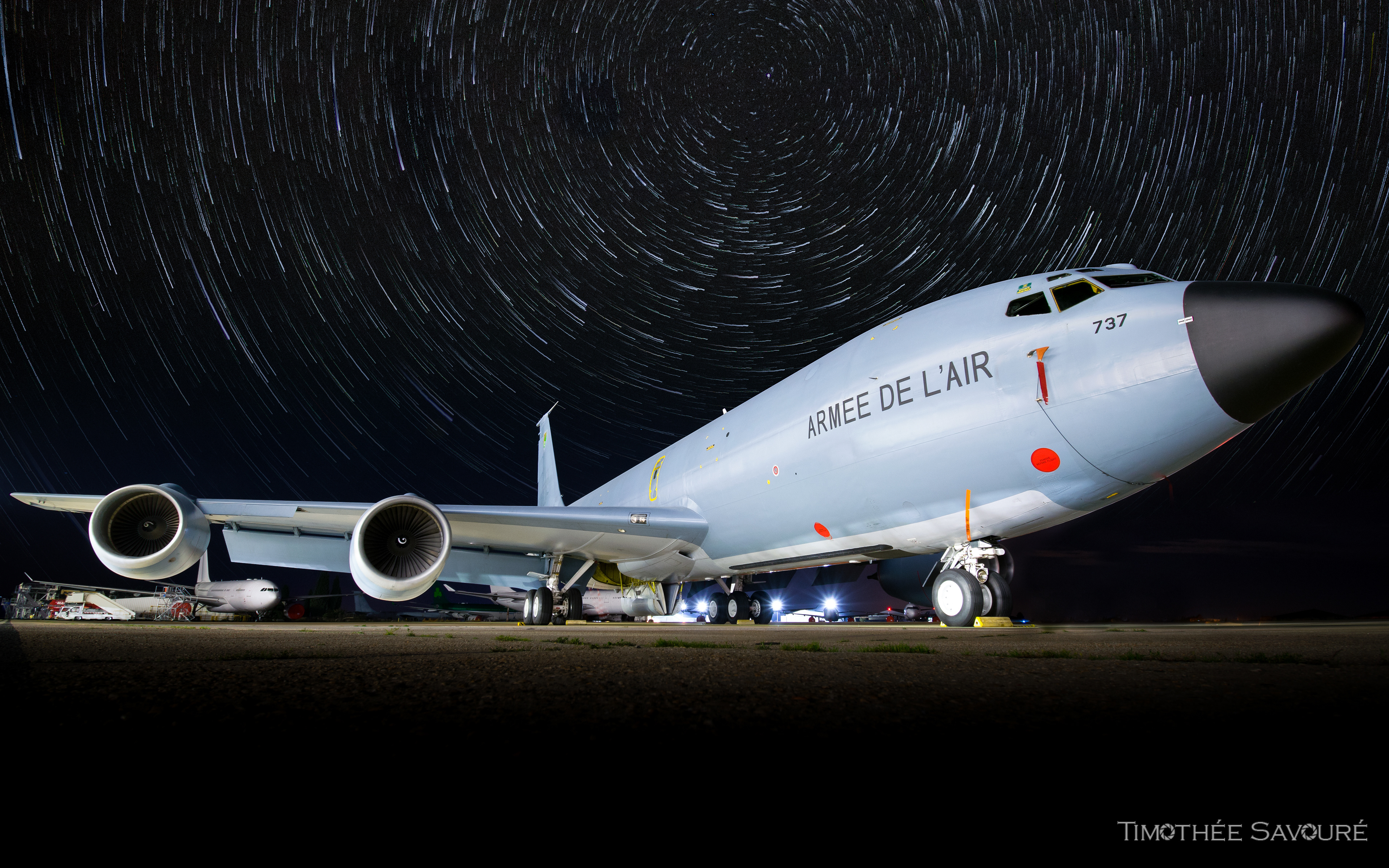
French Air Force C-135FR resting in the night sky

C-135FR with Mirage 2000s over Paris for a Bastille Day parade
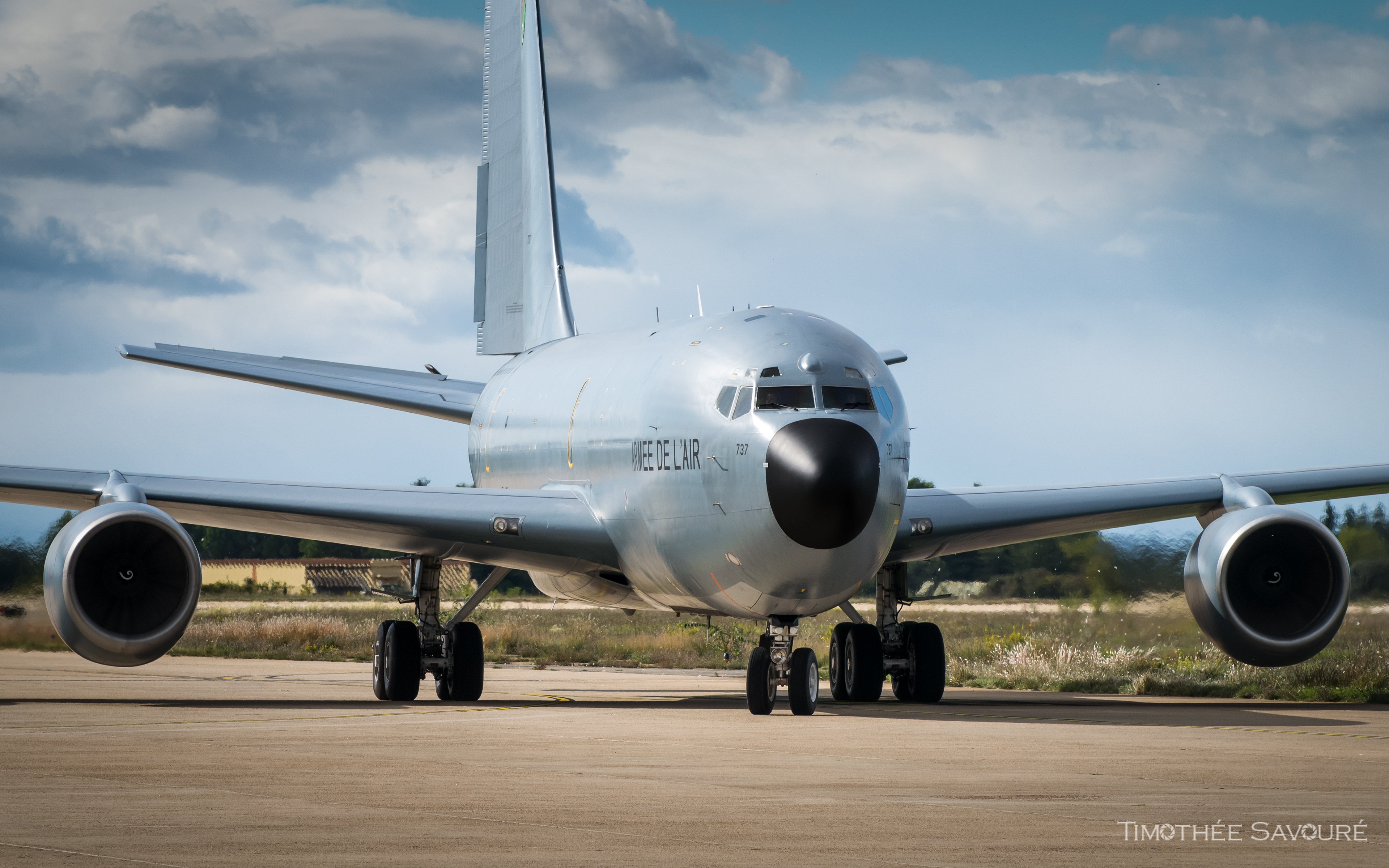
C-135FR 31-CI 737 taxiing in Nîmes after landing for a maintenance visit
The operations of the C-135
Upon their delivery in 1965, the twelve Stratolifters were assigned to three mixed Mirage IV/C-135F bombing squadrons within the 90th Air Refueling Wing (ERV 90). In 1976, following the restructuring of the Forces Aériennes Stratégiques (FAS, Strategic Air Forces), all air refueling squadrons were consolidated under the 93rd Air Refueling Wing (93e Escadre de Ravitaillement en Vol). The Wing then consisted of three squadrons: ERV 1/93 “Aunis” based in Istres, ERV 2/93 “Sologne” in Avord, and ERV 3/93 “Landes” in Mont-de-Marsan.
In 1996, ERV 1/93 "Aunis" and ERV 3/93 "Landes" were disbanded, and their air refueling resources were merged into the newly formed ERV 93 "Bretagne", which became the sole unit in the French Air Force operating the C-135FR. Over the years, the squadron underwent multiple redesignations, becoming Groupe de Ravitaillement en Vol 2/91 "Bretagne" in 2019 before its traditions were passed on to the newly established ERVTS 1/31 "Bretagne", responsible for operating the Airbus A330 MRTT "Phénix". Today, the Escadron de Ravitaillement en Vol 4/31 "Sologne" is the last Boeing tanker squadron in the French Air Force, operating the remaining three KC-135RGs.
In 1996, ERV 1/93 "Aunis" and ERV 3/93 "Landes" were disbanded, and their air refueling resources were merged into the newly formed ERV 93 "Bretagne", which became the sole unit in the French Air Force operating the C-135FR. Over the years, the squadron underwent multiple redesignations, becoming Groupe de Ravitaillement en Vol 2/91 "Bretagne" in 2019 before its traditions were passed on to the newly established ERVTS 1/31 "Bretagne", responsible for operating the Airbus A330 MRTT "Phénix". Today, the Escadron de Ravitaillement en Vol 4/31 "Sologne" is the last Boeing tanker squadron in the French Air Force, operating the remaining three KC-135RGs.
Throughout their service, French C-135 and KC-135 tankers have played a key role in numerous missions and overseas operations for the Armée de l’Air et de l’Espace. Their primary role has been in-flight refueling and communications relay for the Mirage IV strategic bomber, later for the Mirage 2000N, and now for the Rafale within the FAS. The C-135s have always participated in ‘Poker’ exercises, regular nuclear strike simulations over French territory to train nuclear response capabilities. They have also been crucial for rapid long-distance aircraft deployments. During periods of nuclear alert, the C-135s were capable of taking off within 15 minutes, with a 5-minute readiness alert even tested.
KC-135s have also been heavily engaged in combat operations and coalition missions, supporting France’s military interventions abroad. They played a key role in the 1990–1991 Gulf War (Kuwait and Iraq), Operation Enduring Freedom (Afghanistan), and numerous other missions across Africa, the Middle East, and beyond. They also supported special operations, such as Operation Tobus in February 1986, when two Mirage IVAs flew a 10,000 km, 11-hour reconnaissance mission from Istres to Ouadi Doum (Northern Chad) to photograph a strategic airfield bombed the previous day by eleven Jaguars. Four C-135s were deployed in support, refueling the Mirage IVs in succession.
The French C-135FRs were modified to carry cargo on the main deck by replacing their wooden floor panels with metal reinforcements. However, the remaining three KC-135RGs, acquired from the U.S., still have wooden floors. These reinforcements allowed them to transport a variety of payloads, including the MORPHEE module, a medical evacuation system introduced in 2006. This module transformed the C-135 into a flying hospital unit, equipped with life-support systems, intensive care stations, and space for medical personnel, enabling the transport of critically wounded soldiers over long distances. MORPHEE was notably deployed in Afghanistan and Mali for medical evacuations of injured personnel.
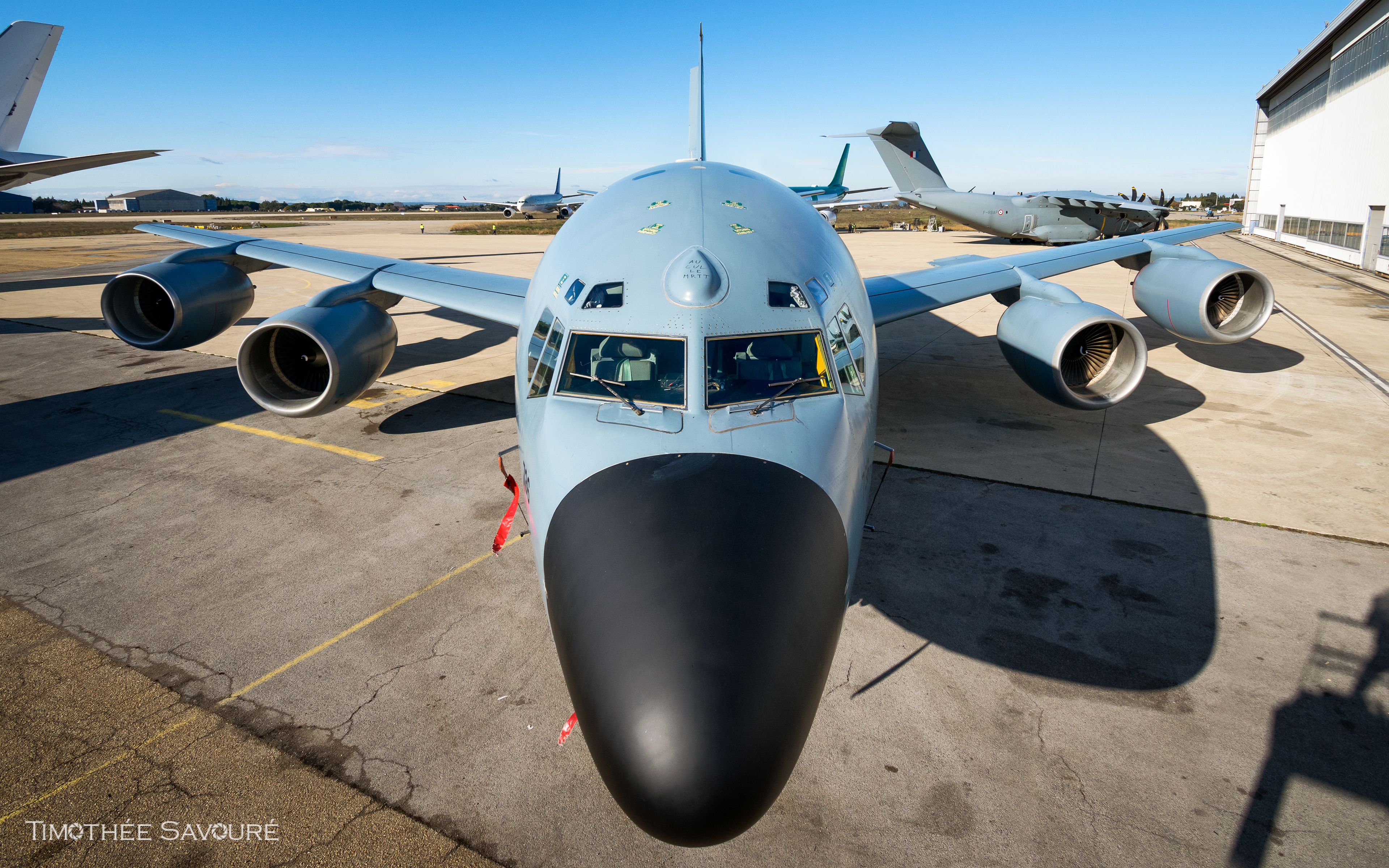
Up close and personal with a C-135FR with a special message from Istres mechanics
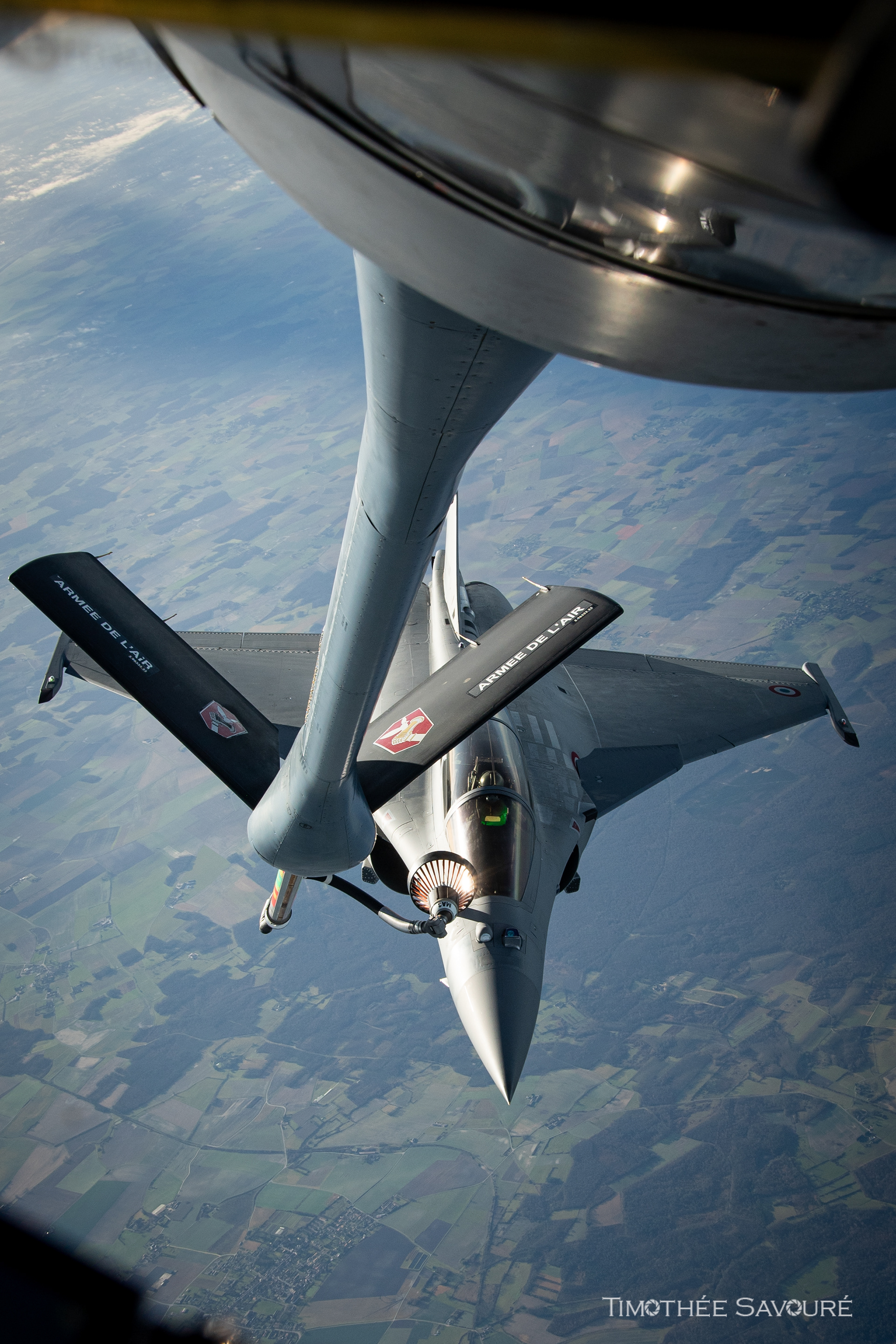
Air refueling onboard a French KC-135RG with a Rafale B
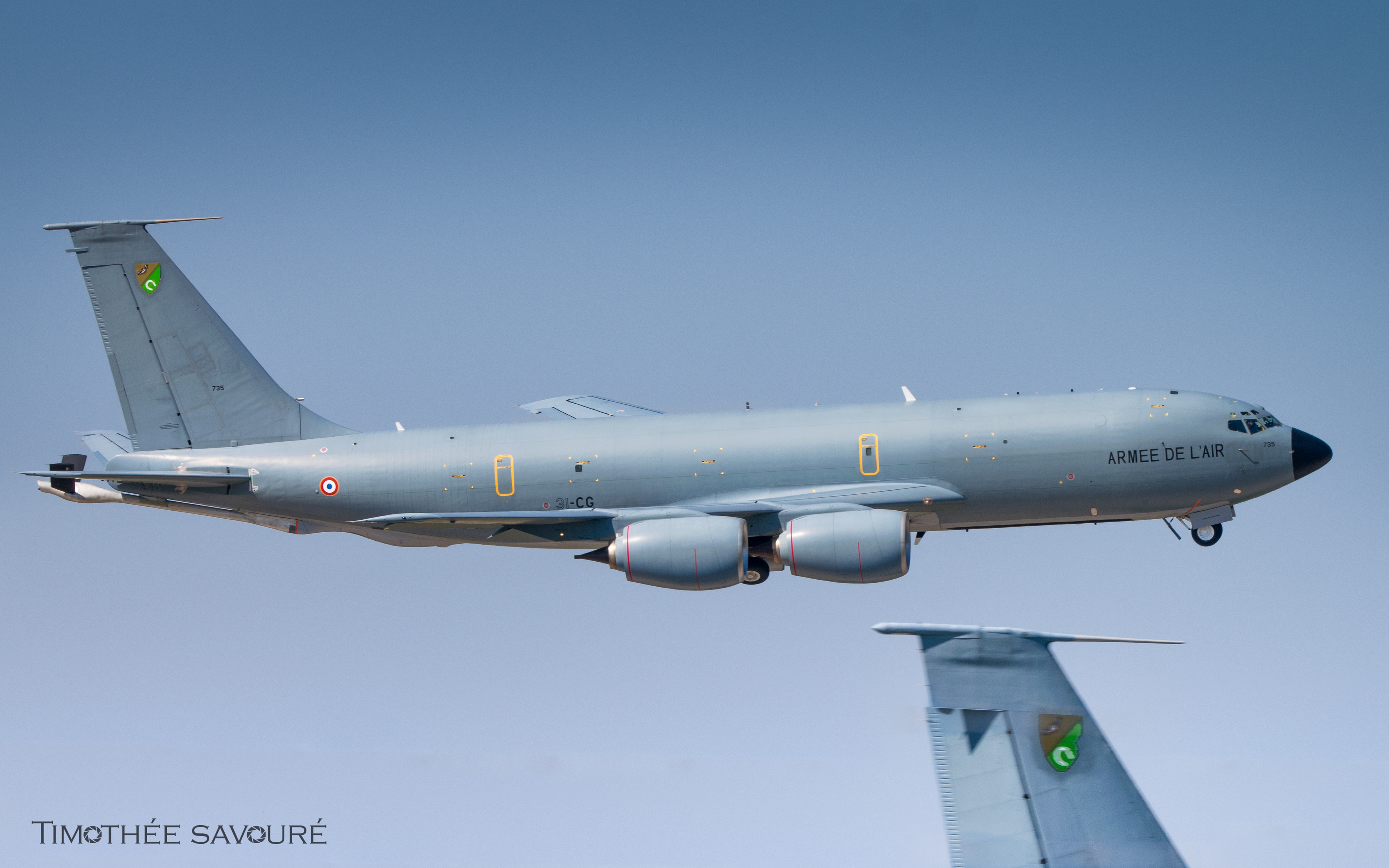
Wing wave for this C-135FR departing Nîmes after a maintenance check
Supporting the C-135
To maintain operational readiness of its C-135 fleet for more than six decades, the French Air Force had to rely on various organizations. Initially, line maintenance (servicing, minor inspections, wheel and brake changes, small repairs, and basic maintenance tasks) was carried out at Avord, Mont-de-Marsan, and Istres, where the aircraft were based. Second-echelon maintenance was performed at Istres by GERMAS 15/090, which was initially attached to the 90th Aerial Refueling Wing.
During the early years, maintenance technicians had to adapt to the C-135F and familiarize themselves with its specific systems. Over time, GERMAS became a fully independent unit and established itself in its own HM28 hangar in Istres, gradually increasing its maintenance capabilities. As mechanics gained expertise, they were able to meet the operational readiness targets set by the command, ensuring the availability of the fleet. In 1993, mechanics from the three air refueling units were transferred to GERMAS 15/93 to form the newly created Escadron de Soutien Technique Spécialisé (ESTS 15/93) at Istres. With a workforce of 400 personnel, ESTS 15/93 centralized all first- and second-echelon maintenance activities for the C-135F and C-135FR fleets. This included performing 200-hour and 400-hour periodic inspections, conducting major repairs, and ensuring the continuous readiness of the aircraft. The unit was also responsible for the preparation and turnaround of C-135F and C-135FR aircraft, overseeing arrivals and departures.
Air France's Technical Department, based at Paris-Orly, was responsible for major overhauls and heavy maintenance. During the introduction of the C-135F, several Air France technicians were integrated into the GERMAS teams for a period to familiarize themselves with the aircraft and its maintenance requirements. At Orly, two main maintenance visits were conducted.
- VCV (Visite Corrosion Vieillissement): Performed every four years, this inspection focused on detecting corrosion and aging-related degradation of aircraft components.
- EMJ (Entretien Majeur): The most detailed overhaul, also performed every four years, involved the removal of the engines, tail, horizontal stabilizer, wingtips, radome, cockpit, boom, and landing gear for thorough inspection.
In 2008, maintenance responsibilities were transferred to Sabena Technics, a French aerospace company specializing in military aircraft support. Sabena Technics took over heavy maintenance, major inspections, and structural upgrades for the KC-135 fleet in their site of Nîmes, just a few kilometers from Istres. See Jet Blast Area's report about this airport here. As was the case with Air France, a complete paint stripping was performed during each EMJ visit, followed by the application of a new coat of paint before delivery.
Several modernization programs were implemented to extend the operational life of the C-135FR and KC-135R. In 2009, France announced the RENO2 avionics modernization program for its 11 C-135FRs, ensuring compliance with ICAO regulations for operations in civilian airspace. The first upgraded aircraft in was received in 2011 and the program was complete by 2013, with modernization work carried out by Air France. In 2014, modernization efforts focused on the three KC-135Rs. The upgrades included avionics that met the RENO Global Air Traffic Management (GATM) standard, aligning the aircraft's navigation capabilities with those of modernized U.S. KC-135s. Additionally, the modifications preserved the unique French on-board intercom system, integrated a high-frequency wire antenna, and reconfigured the aircraft to accommodate standard cargo pallets. Today, the aircraft comply with the GATM Block 40.6 standard, ensuring their continued ability to operate effectively within modern air traffic control systems.
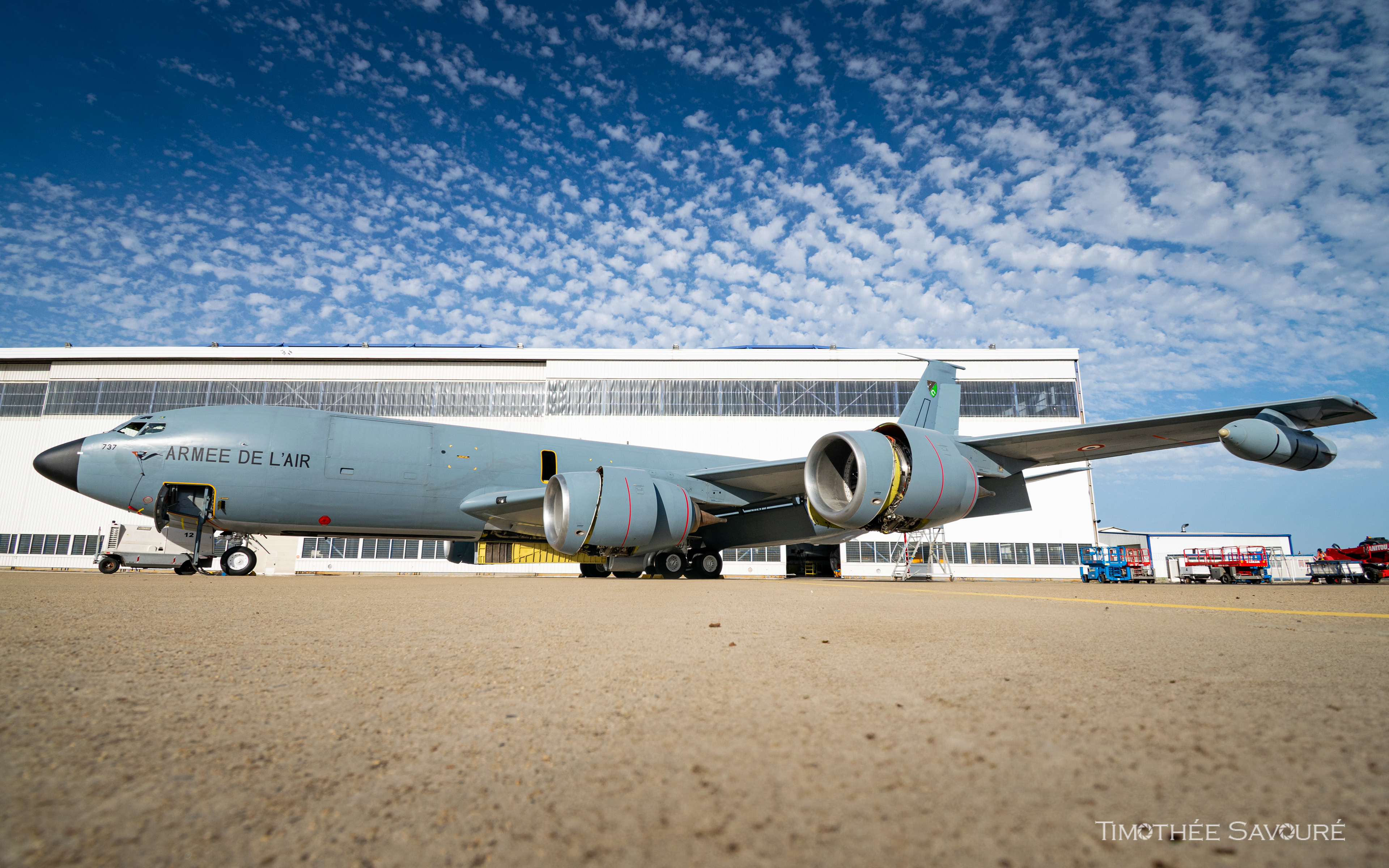
Armée de l'Air Boeing C-135FR in the apron for maintenance
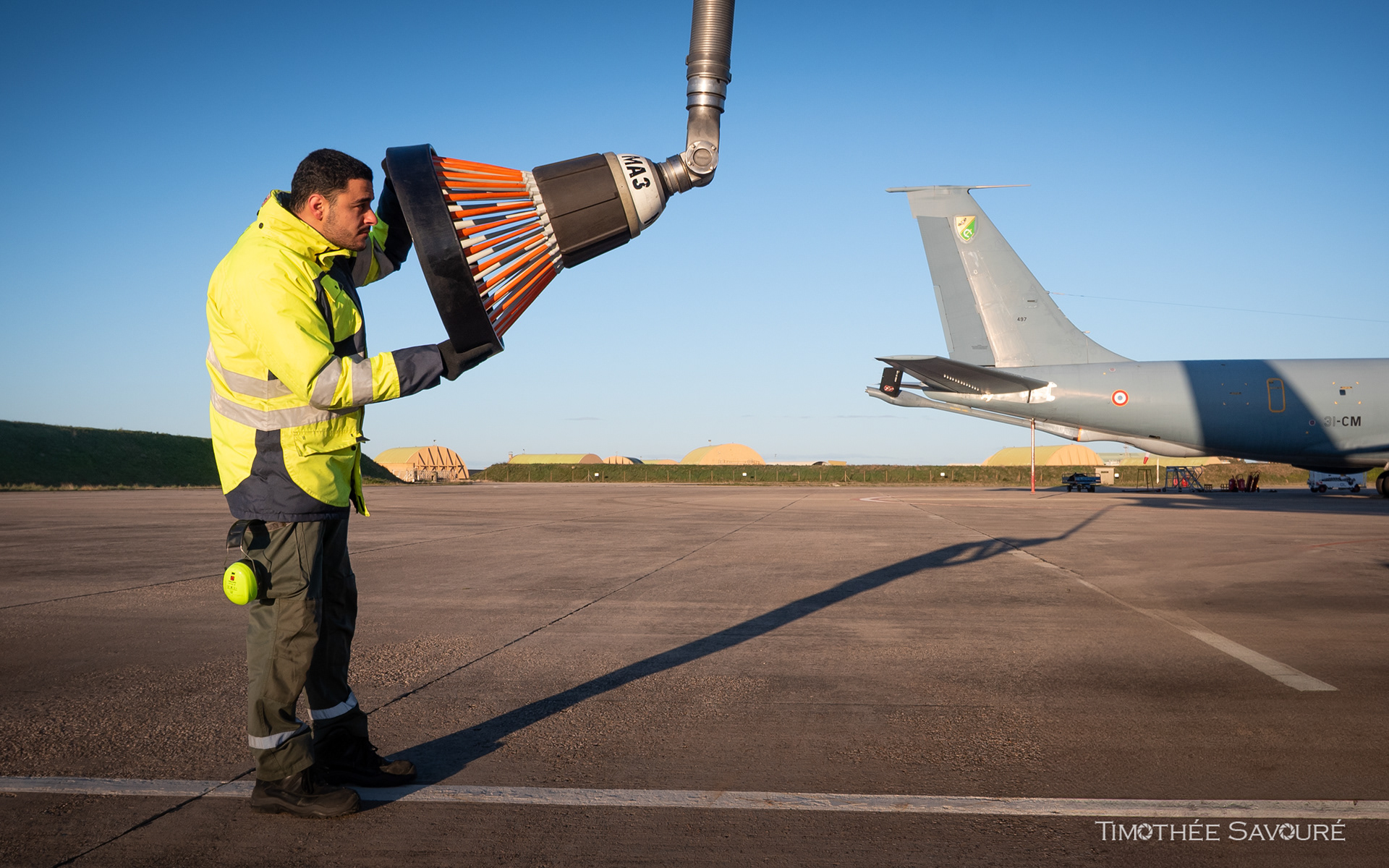
Final checks for this mechanic before an air refueling flight
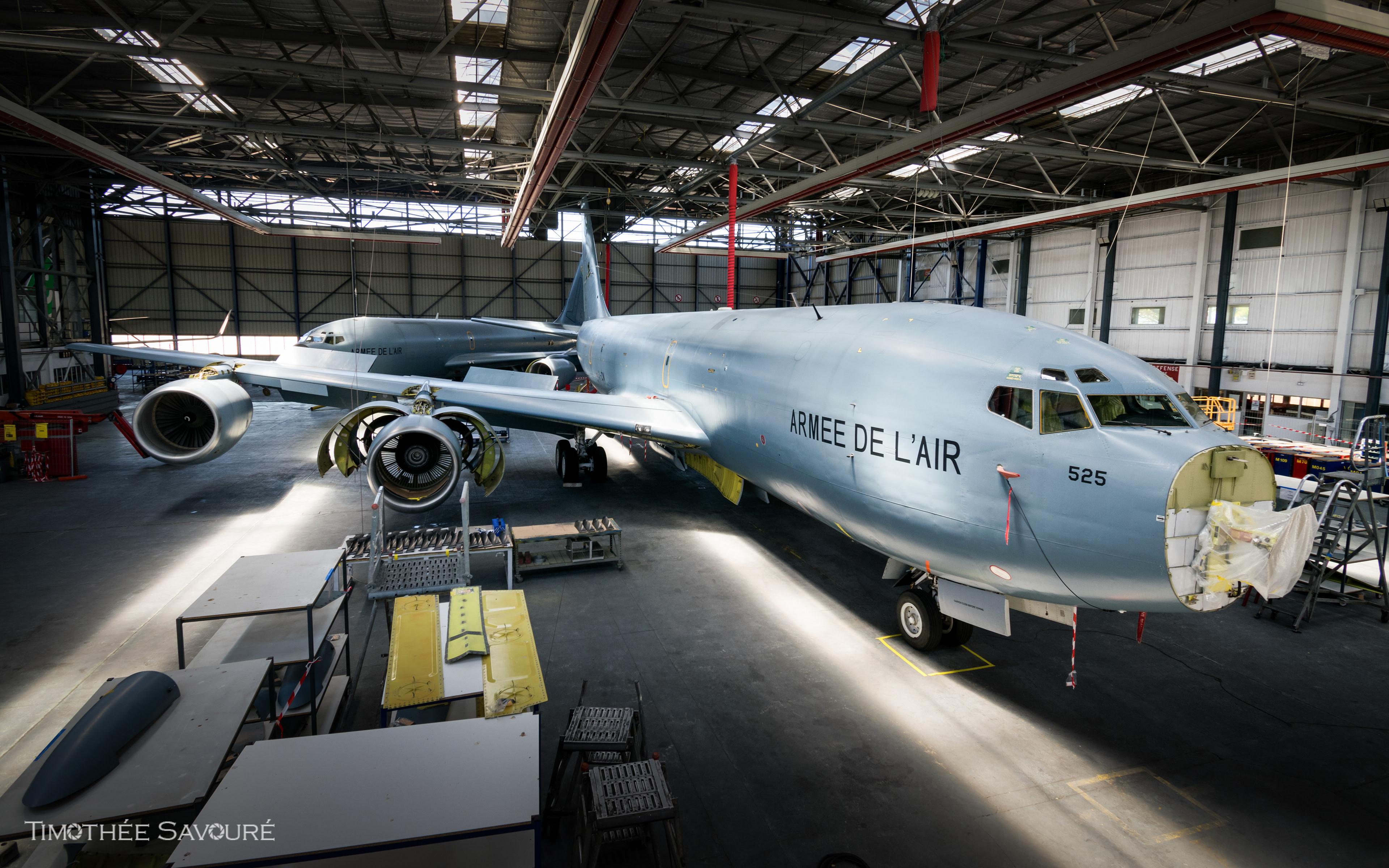
KC-135RG 525 / F-UKCN in the hangar for maintenance
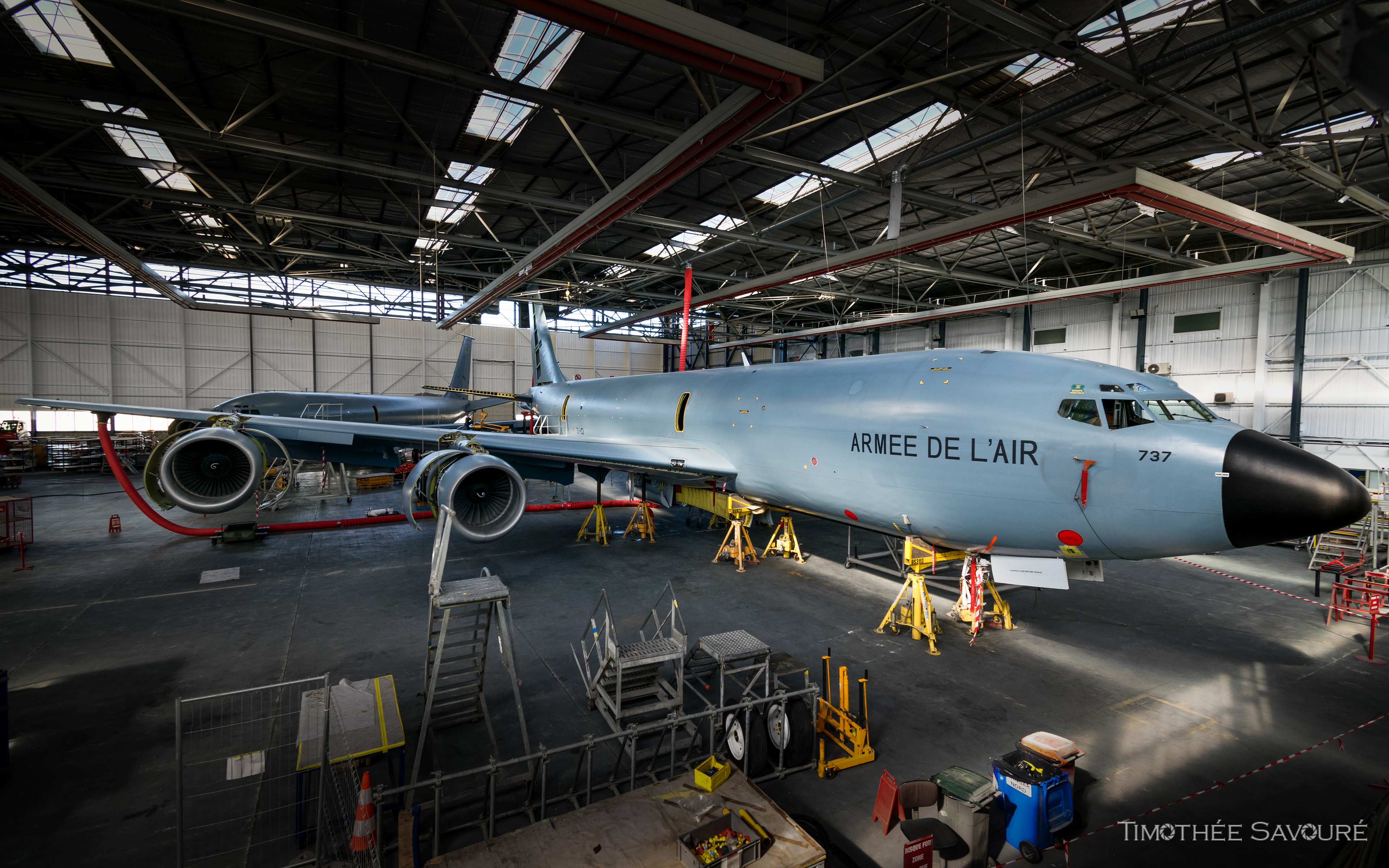
C-135FR 737 / F-UKCI in the hangar for maintenance
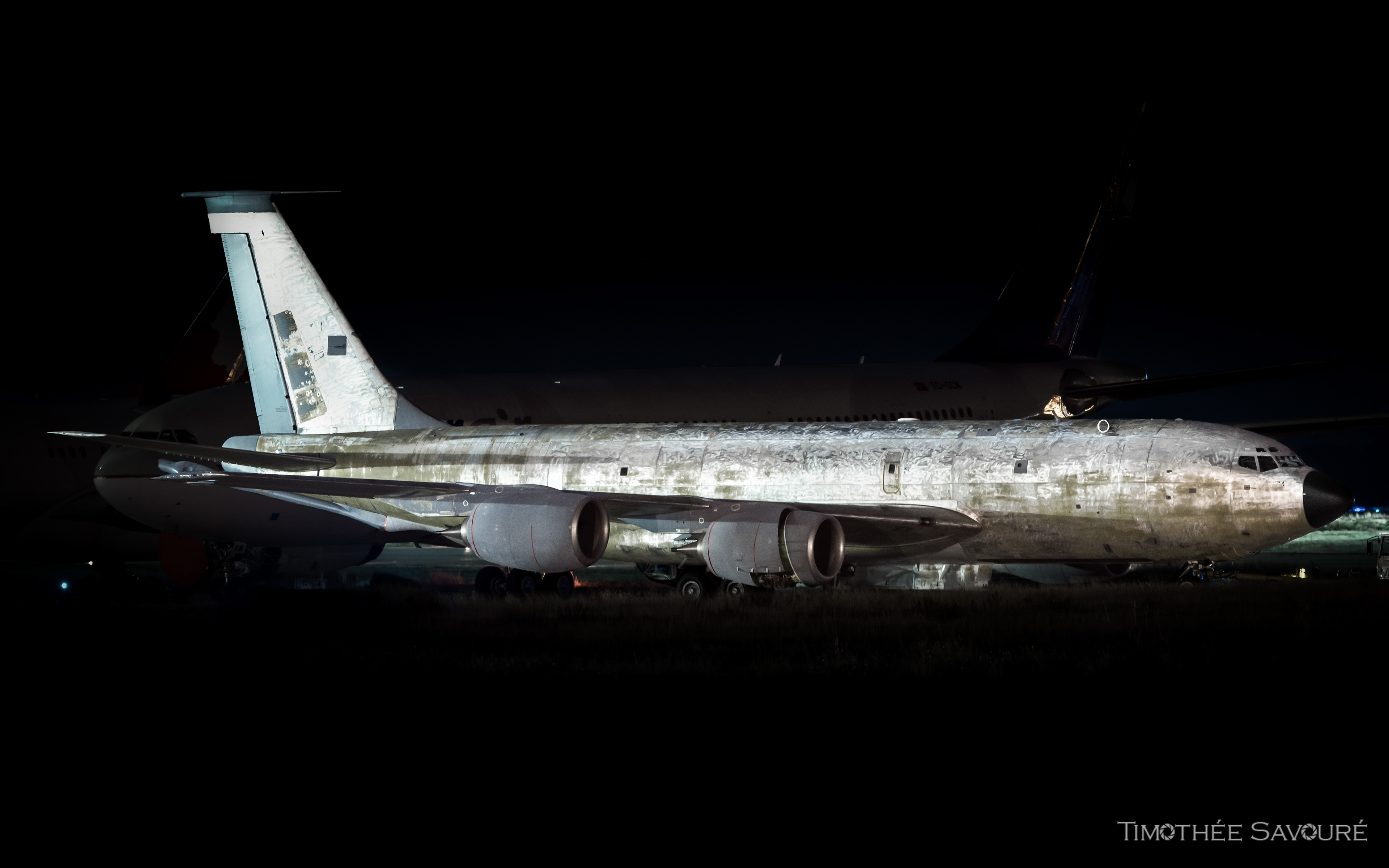
KC-135RG 574 / F-UKCP with its paint stripped before an EMJ heavy maintenance visit
The sundown
In 2013, nearly 50 years after the C-135 was introduced into the French Air Force fleet, it was announced that the Airbus A330 MRTT (Multi-Role Tanker Transport) would replace the aging Boeing tankers. The C-135 airframes had become increasingly expensive to maintain and operate, and their fuel and cargo capacity was deemed insufficient for modern operational needs. As a result, 12 Airbus A330 MRTTs were ordered, with the first aircraft being delivered in 2018 to the 31st Air Refueling and Strategic Transport Wing (31 EARTS) at Istres Air Base.
With the arrival of the A330 MRTT, the progressive retirement of the C-135FR fleet began. In October 2020, the first C-135FR (MSN 472, F-UKCC) was ferried to Nîmes for long-term storage, awaiting a potential new assignment. The remaining 10 C-135FRs were gradually withdrawn from service, coinciding with each new A330 MRTT delivery. The final C-135FR (MSN 737, F-UKCI) was officially retired in December 2023 after participating in a final ‘Poker’ nuclear raid simulation, marking the end of an era for the C-135FR in French service. Following their retirement, all C-135FR airframes were stored at Nîmes.
In 2024, it was announced that the American private company Metrea had acquired the entire fleet of former French Air Force C-135FRs and KC-135RGs, with plans to restore and return them to service in the United States. The first of these aircraft, re-registered as N604MA (formerly MSN 470, F-UKCA), departed Nîmes in January 2025 after undergoing heavy maintenance. The aircraft made a stop in Paris Vatry before continuing its ferry flight to Victorville, California. The remaining airframes are set to follow in the coming months, expanding Metrea’s Boeing tanker fleet to 15 aircraft, including the four ex-Singaporean KC-135Rs previously acquired by the company.
The last three KC-135RGs in French service remained operational for a few more months, until their official retirement ceremony on June 30th, 2025. This event marked the end of the Boeing tanker era in France, concluding 61 years of dedicated service to the Air Force, government, and international operations. The C-135 and KC-135 will be remembered as the longest-serving aircraft in the history of the French Air Force, having supported generations of pilots, airmen, and missions in France, NATO, and beyond. The last public appearance of a French KC-135 happened during Bastille Day on July 14th, 2025 over Paris, just three days before its ferry flight to storage in Nîmes.

Stored C-135FRs in Nîmes after their retirement

The first seven retired C-135FR under Nîmes snow
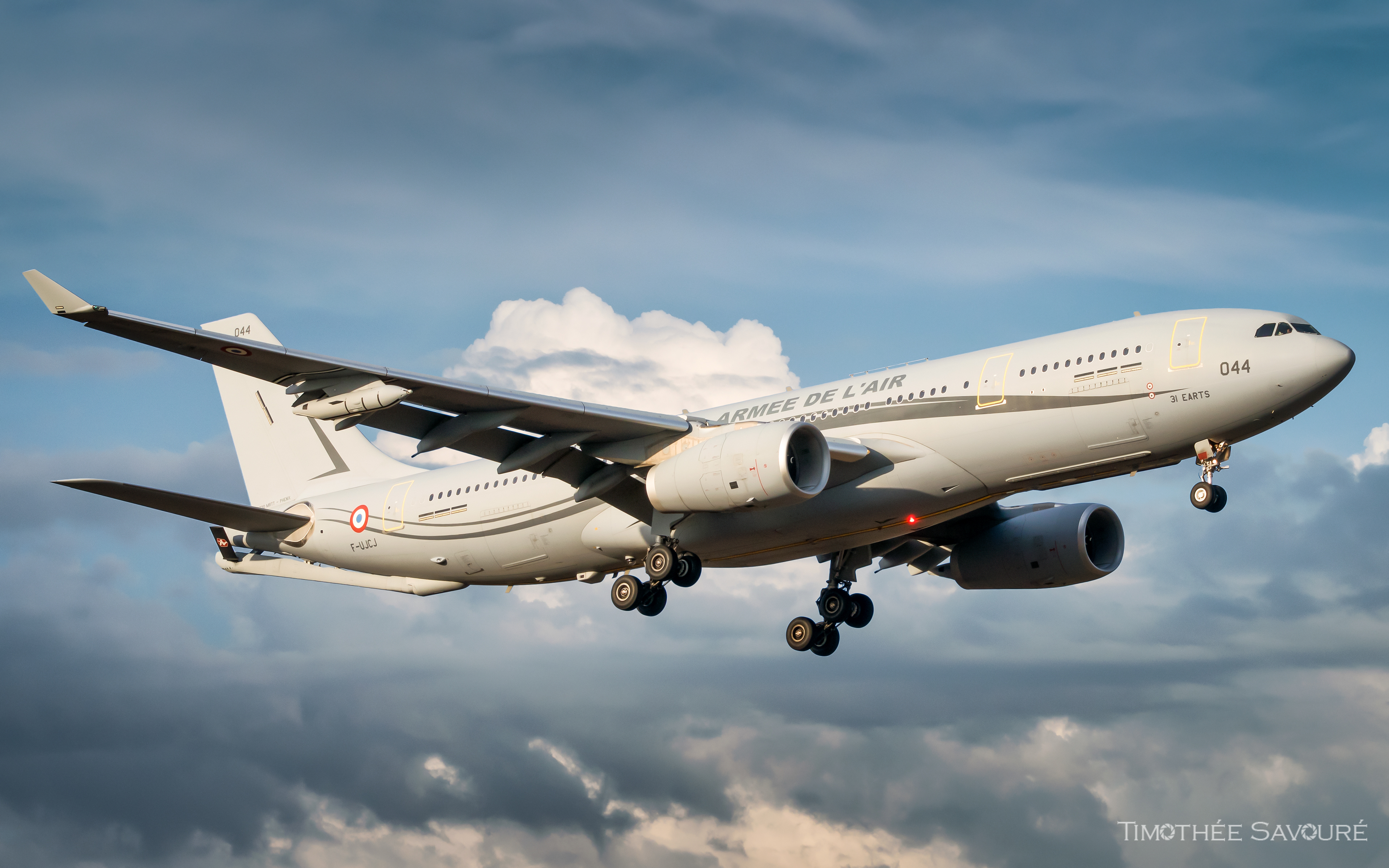
The next generation of air refueling: A330 MRTT

The very last Bastille Day parade for a French KC-135 was with four Rafale fighters, on July 14th, 2025.
Onboard a French KC-135
In February 2025, just a few months before the KC-135's retirement from the French Air Force, Jet Blast Area was invited to take part in a unique air-to-air refueling flight with ERV 4/31 "Sologne". The meeting was set at the main gate of Istres Air Base, in the early light of day. Not much information was initially provided regarding the flight or even the receiving aircraft.
We were escorted to the ERV 4/31 "Sologne" squadron headquarters for the mission briefing, during which the pilots and ARO reviewed all aspects of the flight: weather, mission phases, and the timing in the refueling zone. The day’s callsign: MARCOTTE29 or FAF4119. Take-off was scheduled for 08:30 local time, with a 3.5-hour flight planned. The mission profile included X-ray (air-to-air refueling), Yankee (training at a civilian airport), and Zulu (manual return to base). Landing was expected at 12:10 local time. The anticipated receivers included four Rafales and seven Mirage 2000s.
At 7:15 a.m., as the sun rose over Istres, it was time to walk out to the aircraft. That day’s KC-135RG was MSN 574 / F-UKCP, the next to be retired. Ground crews were busy with final pre-flight checks, while we captured a few photos and received a safety briefing from the ARO, who also serves as loadmaster. We took our seats toward the rear of the aircraft. The two APU (Auxiliary Power Unit) started, then the four CFM-56. We taxied to the runway. “Marcotte 29, runway 33 cleared for take-off, wind is 340 degrees, 17 knots, gusting 39.” Moments later, the KC-135 was airborne, quickly climbing to 28,500 feet. The crew allowed us to move freely inside the aircraft and visit both the cockpit and boom operator’s station before refueling began.
Forty-five minutes into the flight, we reached Olivia refueling track, located between Angers and Poitiers in western France. For the next 1 hour and 15 minutes, the KC-135 was available to provide fuel to any fighters, cruising at 300 knots, the standard refueling speed for Mirage and Rafale aircraft. The first to arrive was a trio of Rafales from Escadron de Chasse 3/30 Lorraine, based in Mont-de-Marsan. Rogue 61, 62, and 63 each took turns connecting to the boom, receiving between 2 and 6 tons of fuel. After fueling, the jets slowly drifted to the tanker’s right side before continuing their mission. Next came Magma 01, a Rafale B from Escadron de Chasse 2/4 La Fayette on a Quick Reaction Alert (QRA) training mission. The Saint-Dizier-based jet carried a single centerline supersonic fuel tank and two MICA missiles. Following a 20-minute pause, Coca 01, a Mirage 2000D from Escadron de Chasse 1/3 Navarre (based in Nancy), approached for refueling. With clouds and gusty winds building, it took several attempts before the student pilot managed to connect and take 2 tons of fuel, then rejoined his wingman. Although five more Mirage 2000Ds had been scheduled, their refueling was canceled, marking the end of the aerial refueling portion. FAF4119 was then cleared to climb back to FL290 for its transit eastward.
The next phase involved training on a civilian airfield. The crew performed two touch-and-go landings at Clermont-Ferrand Airport (LFLC), a location frequently used by the Air Force due to its low civilian traffic. After the circuits, the aircraft returned to Istres, landing on runway 33, the same one from which it had taken off. Despite strong mistral winds, the crew executed a smooth landing.
The afternoon was spent touring ERVTS 1/31 Bretagne, including its headquarters, training facilities, and the A330 MRTT simulator. We also visited the BA125 passenger terminal. For the follow-up report in Istres, showing the operation of the A330 MRTT during a high-intensity exercise, you can visit this link: Jet Blast Area - VOLFA 2025.
Jet Blast Area would like to warmly thank SIRPA Air, Istres Air Base, and the Escadron de Ravitaillement en Vol 4/31 "Sologne" for the unique opportunity to participate in one of the final missions aboard a French KC-135 and to experience the operations of these iconic 60-year-old tankers. Thank you particularly to the crew who was really passionnate, available and friendly, proving their passion for the KC-135.

Briefing before the flight onboard a KC-135
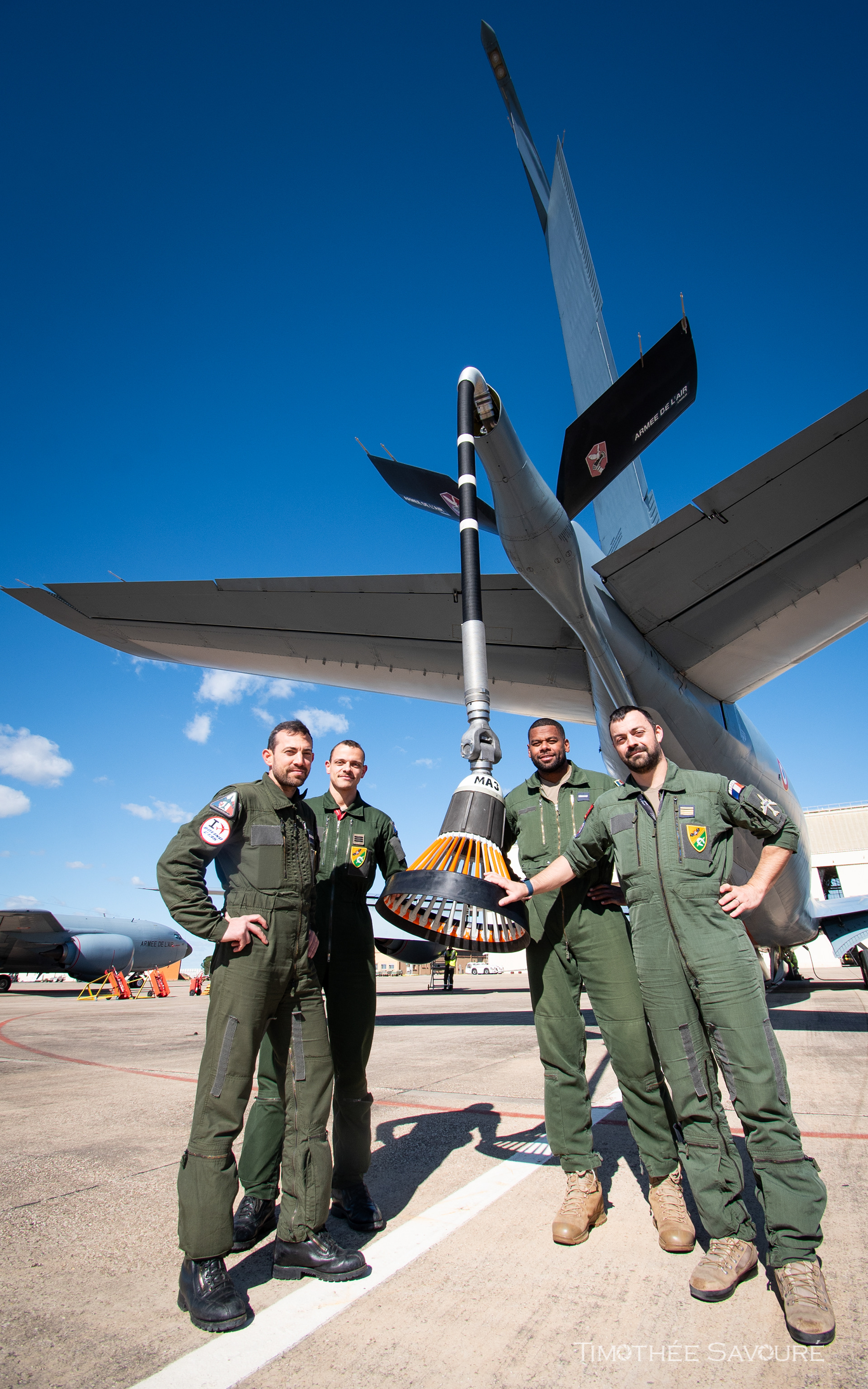
The ERV 4/31 Sologne crew of our flight

Rafale B from 3/30 Lorraine squadron waiting its wingmen after air refueling

The cockpit of the French KC-135RG in flight over France
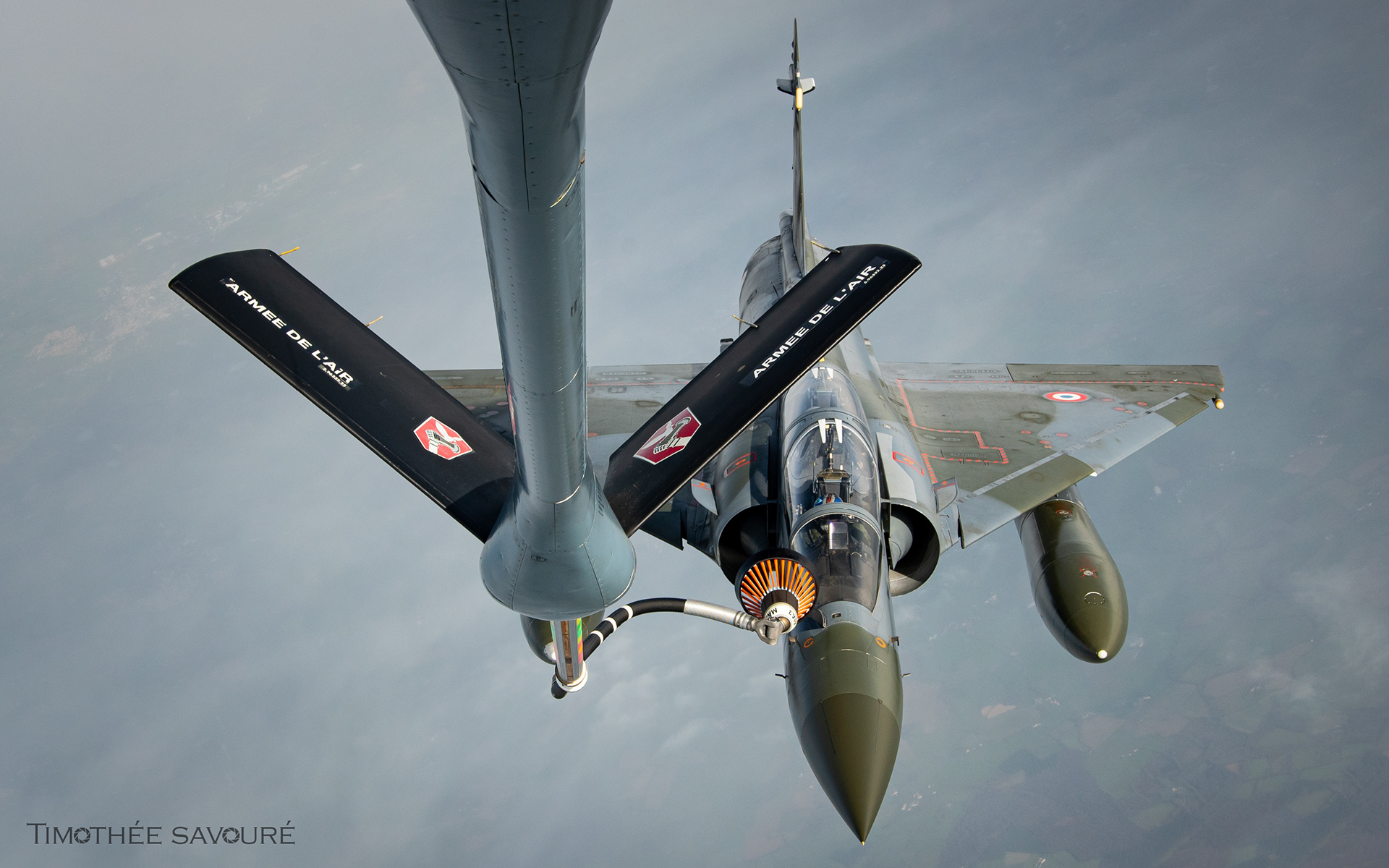
Air-to-air refueling with this Mirage 2000D from 1/3 Navarre squadron
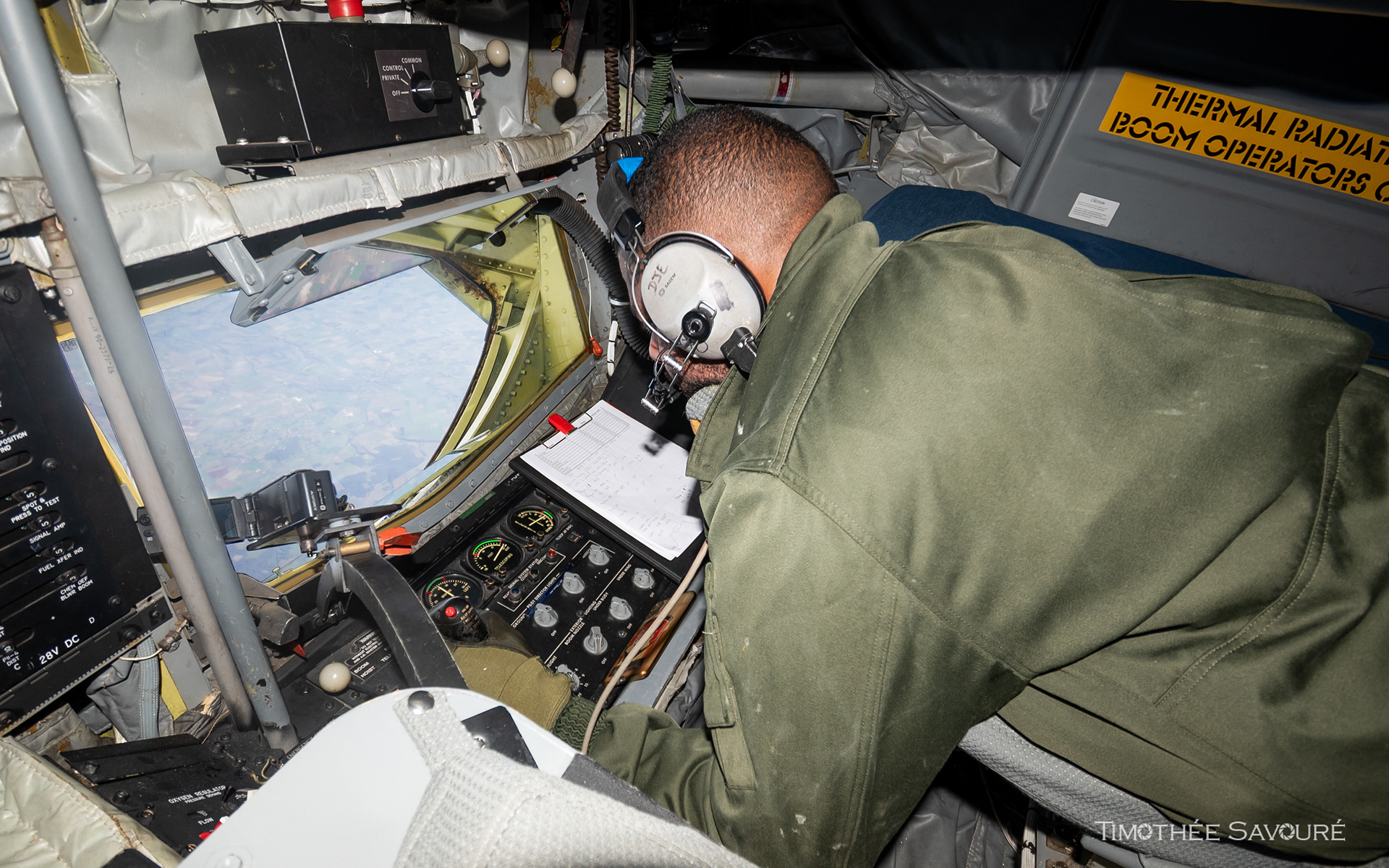
Air Refueling Operator in the Boom compartment
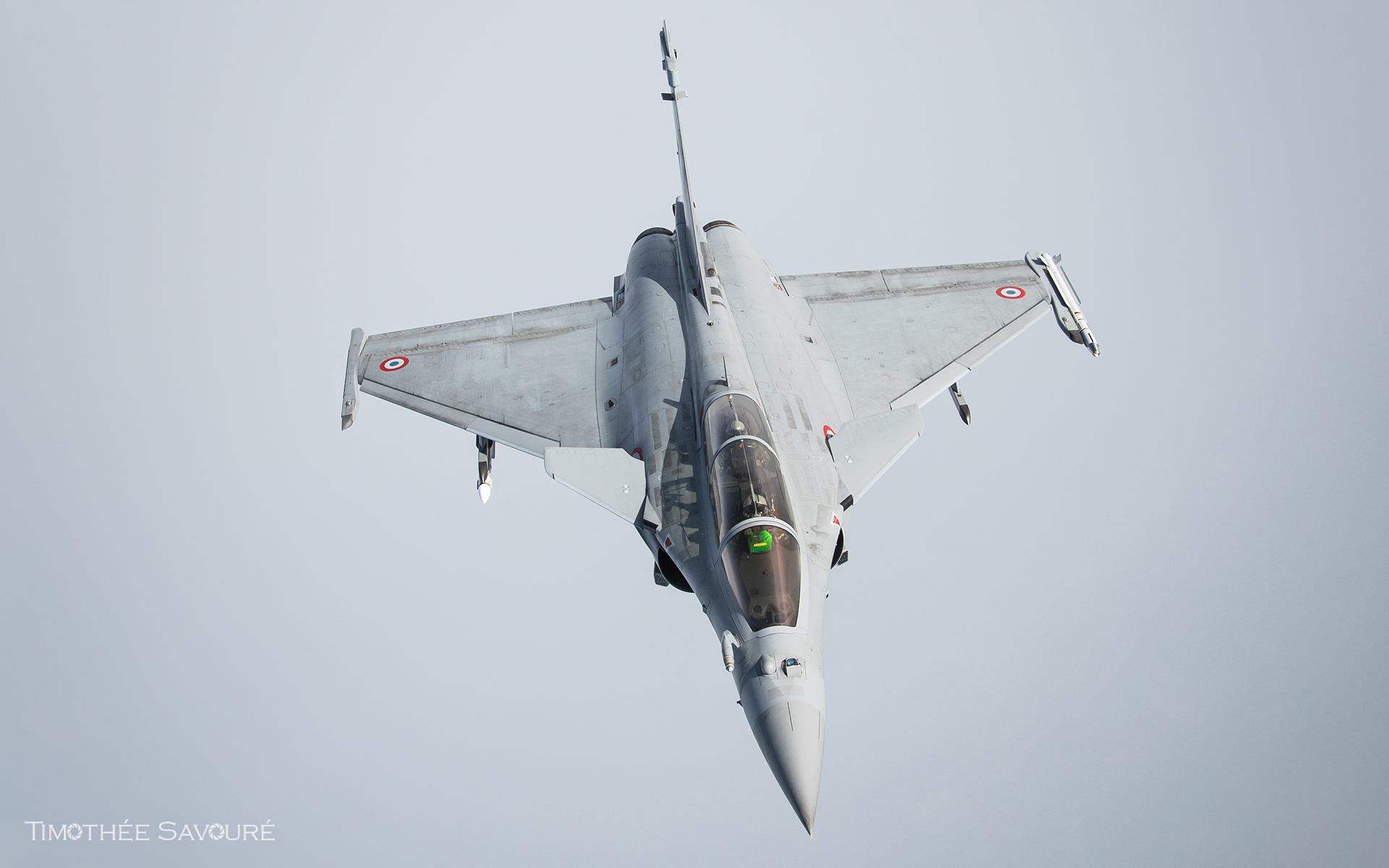
Air-to-air with a QRA Rafale B from 2/4 La Fayette squadron
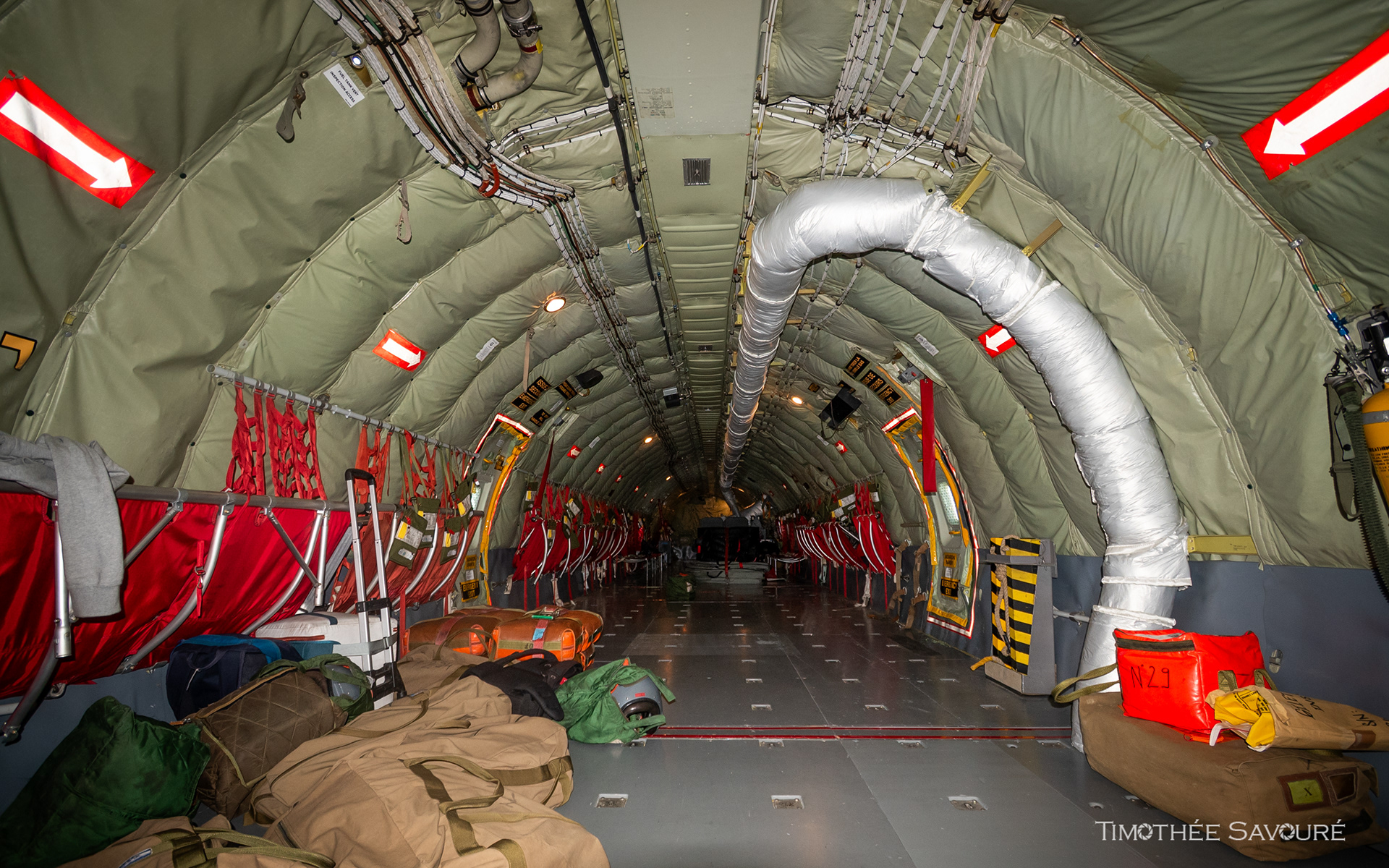
The main deck of the KC-135RG


